The document outlines various neuron models in neuro-engineering, including the integrate-and-fire, leaky integrate-and-fire, spike-response, and adaptive exponential integrate-and-fire models. It explains the mathematical formulations, characteristics, and applications of these models in simulating real neuronal behavior and action potentials. Additionally, the document discusses limitations and variations of these models, highlighting their relevance in understanding neural dynamics.
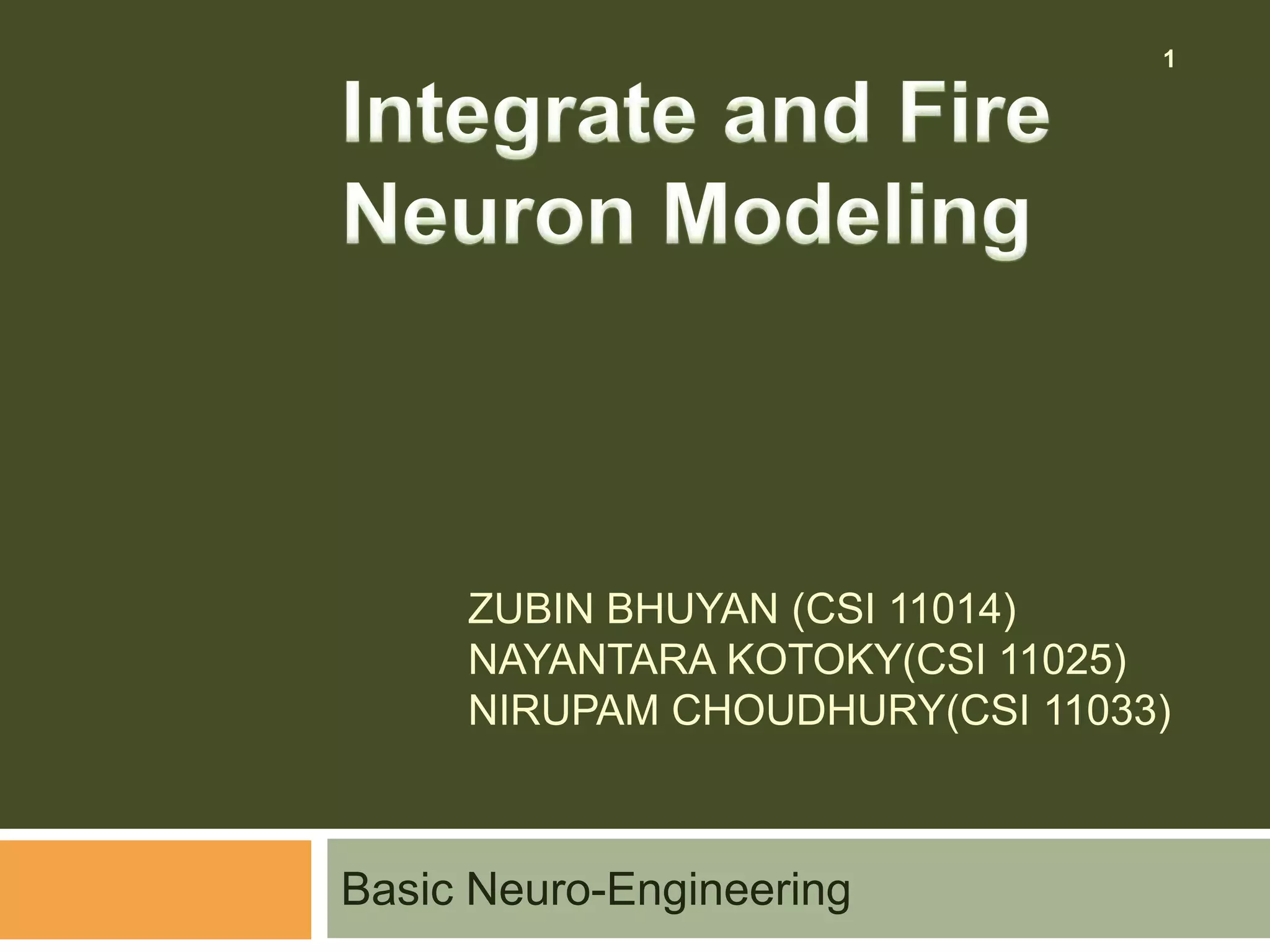
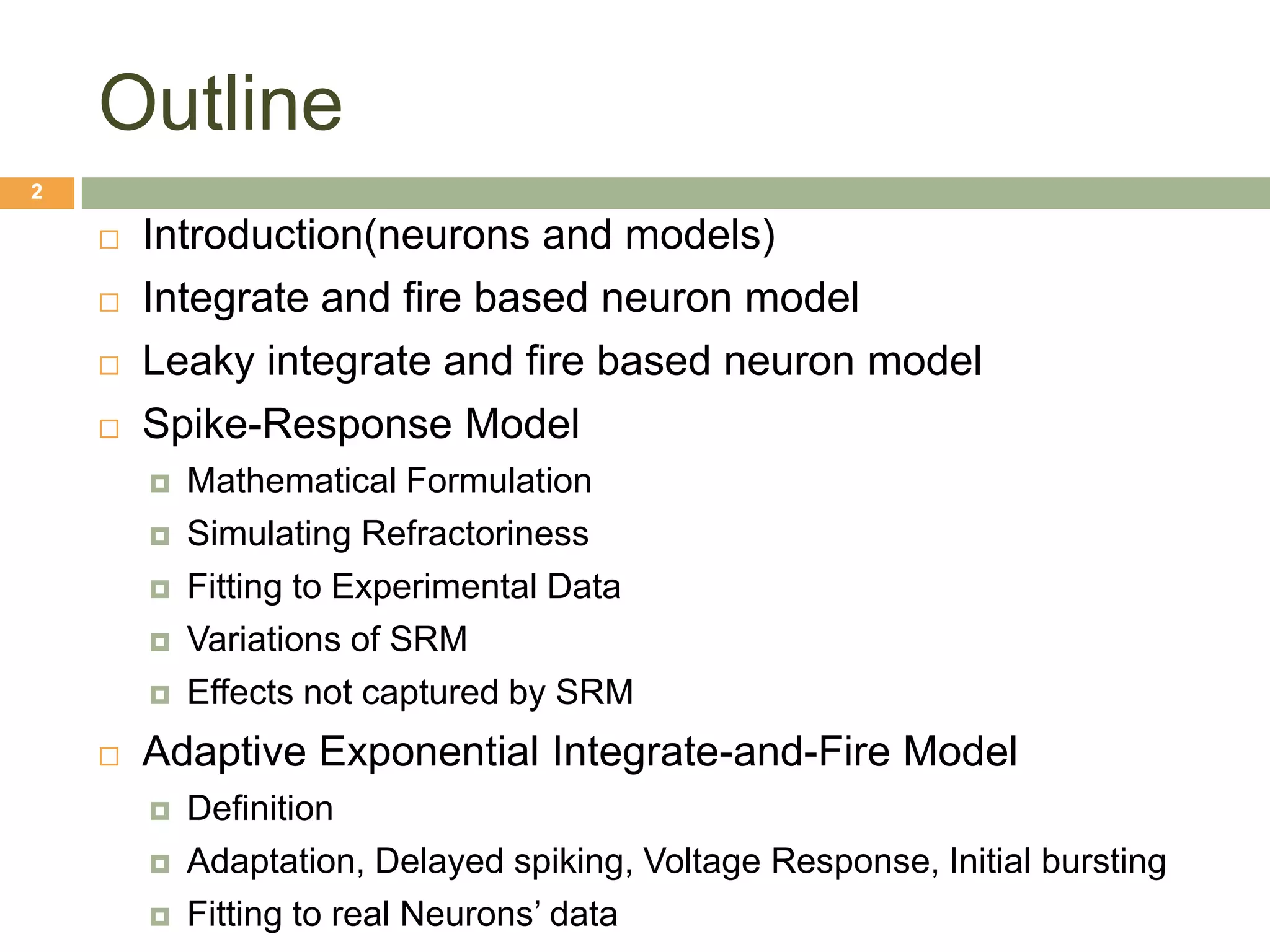
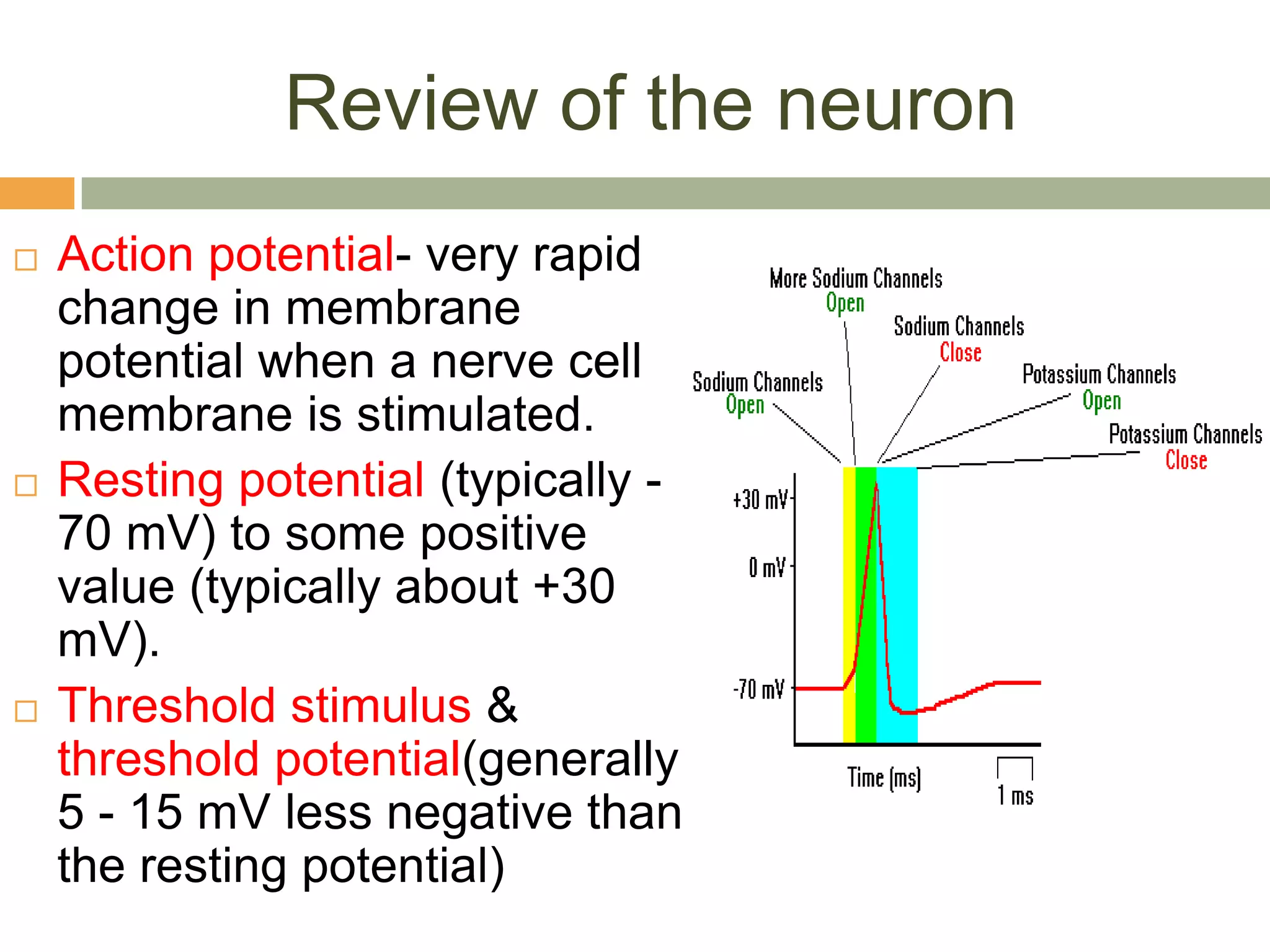
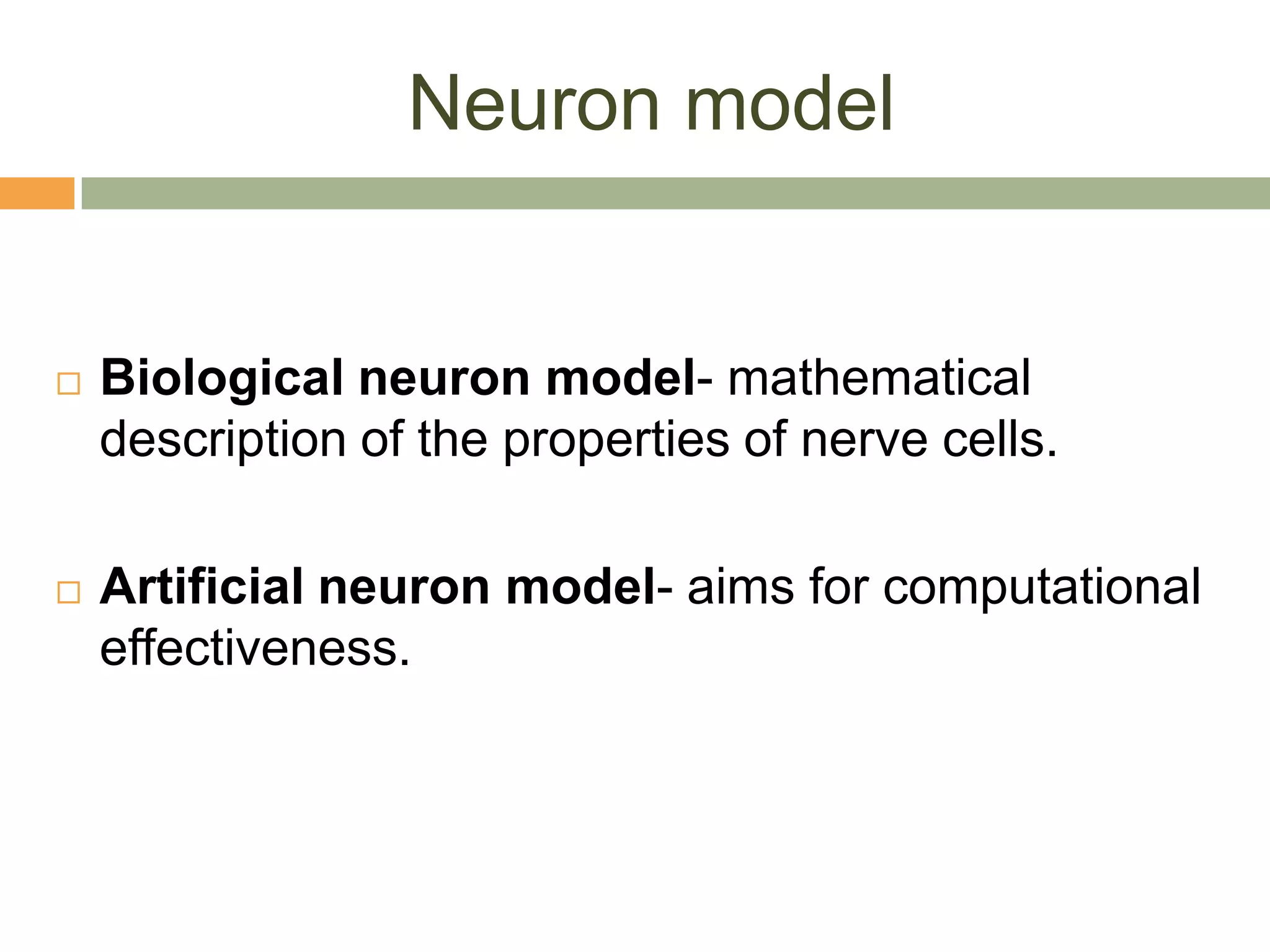
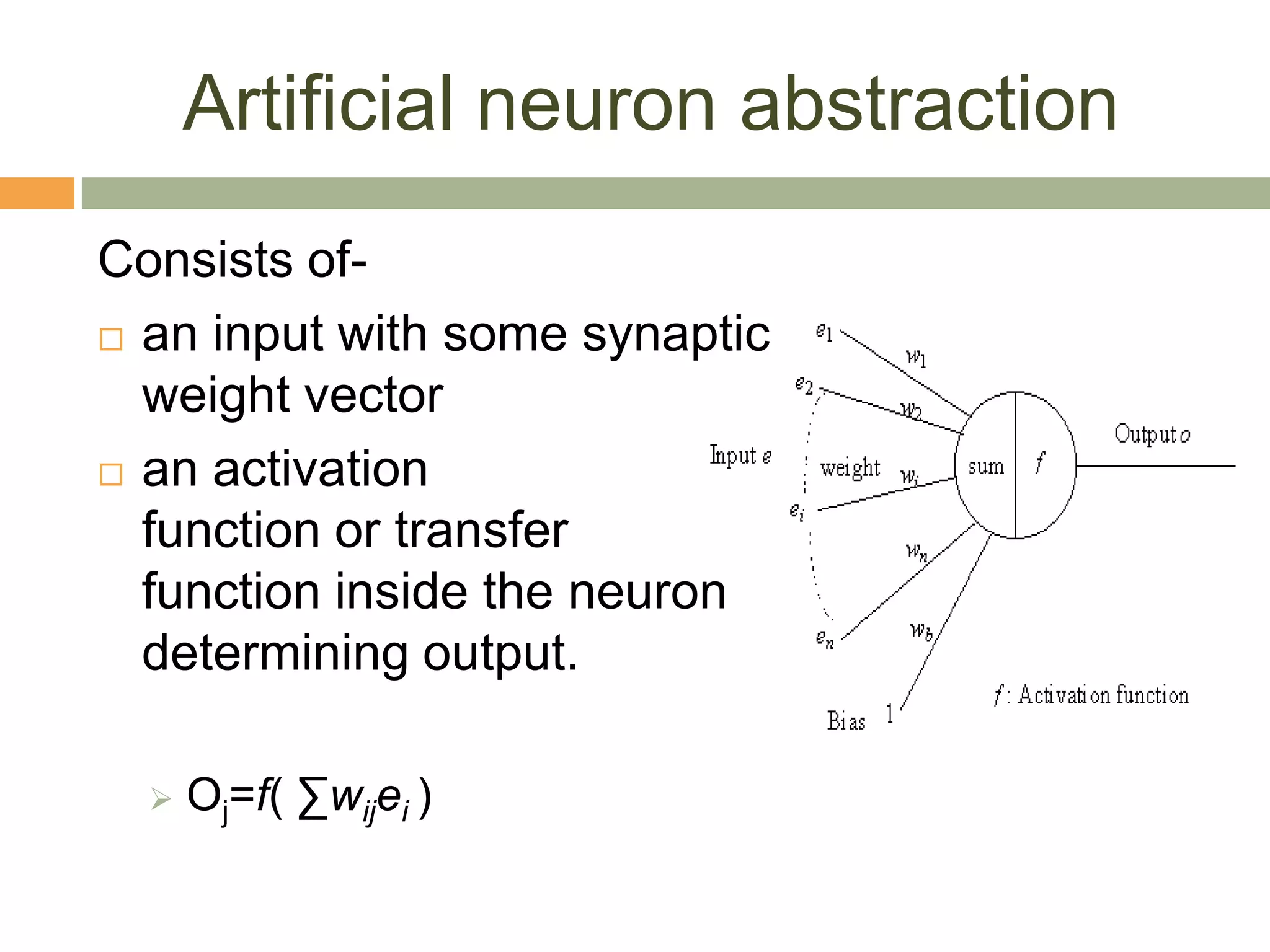
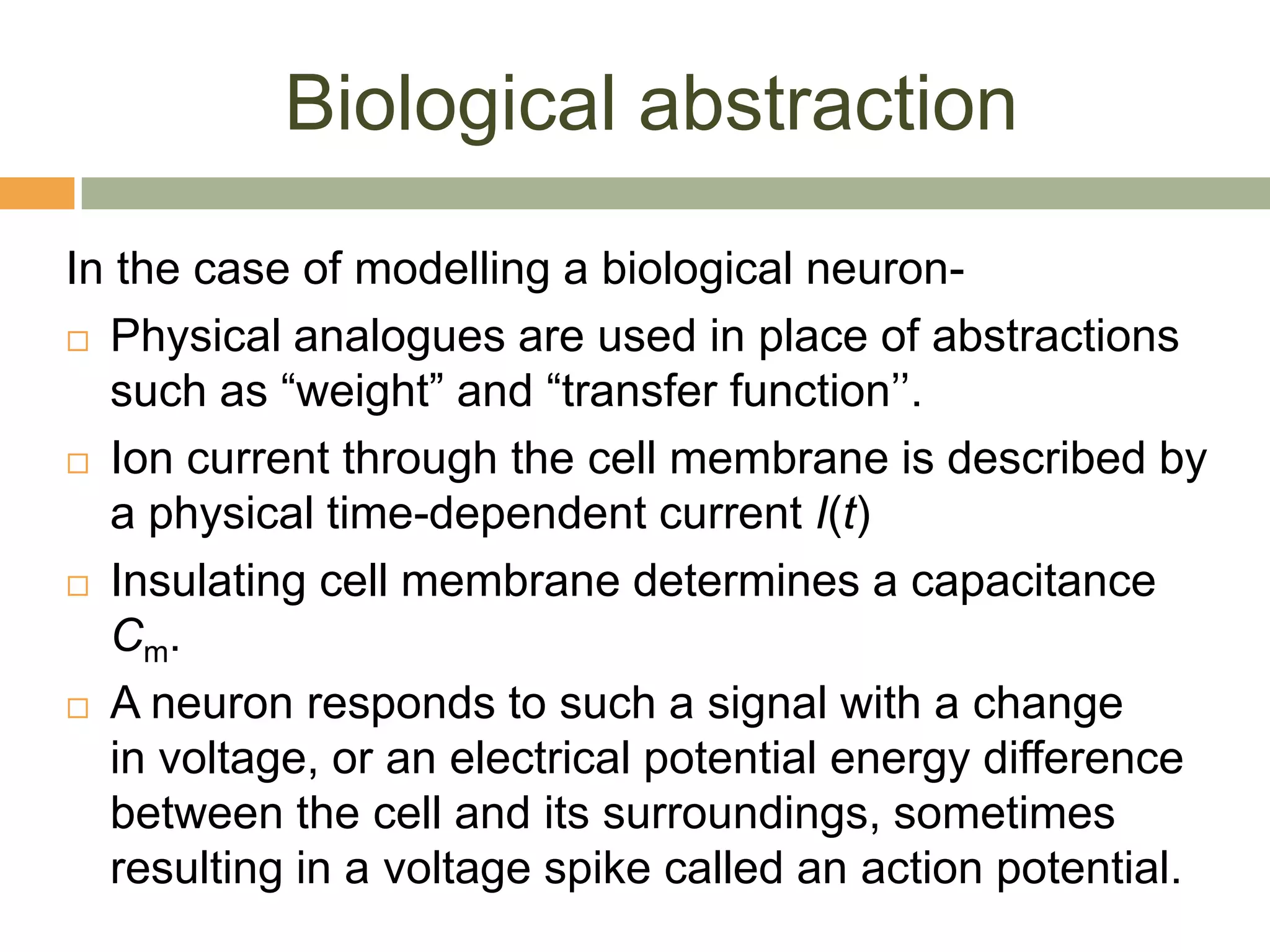
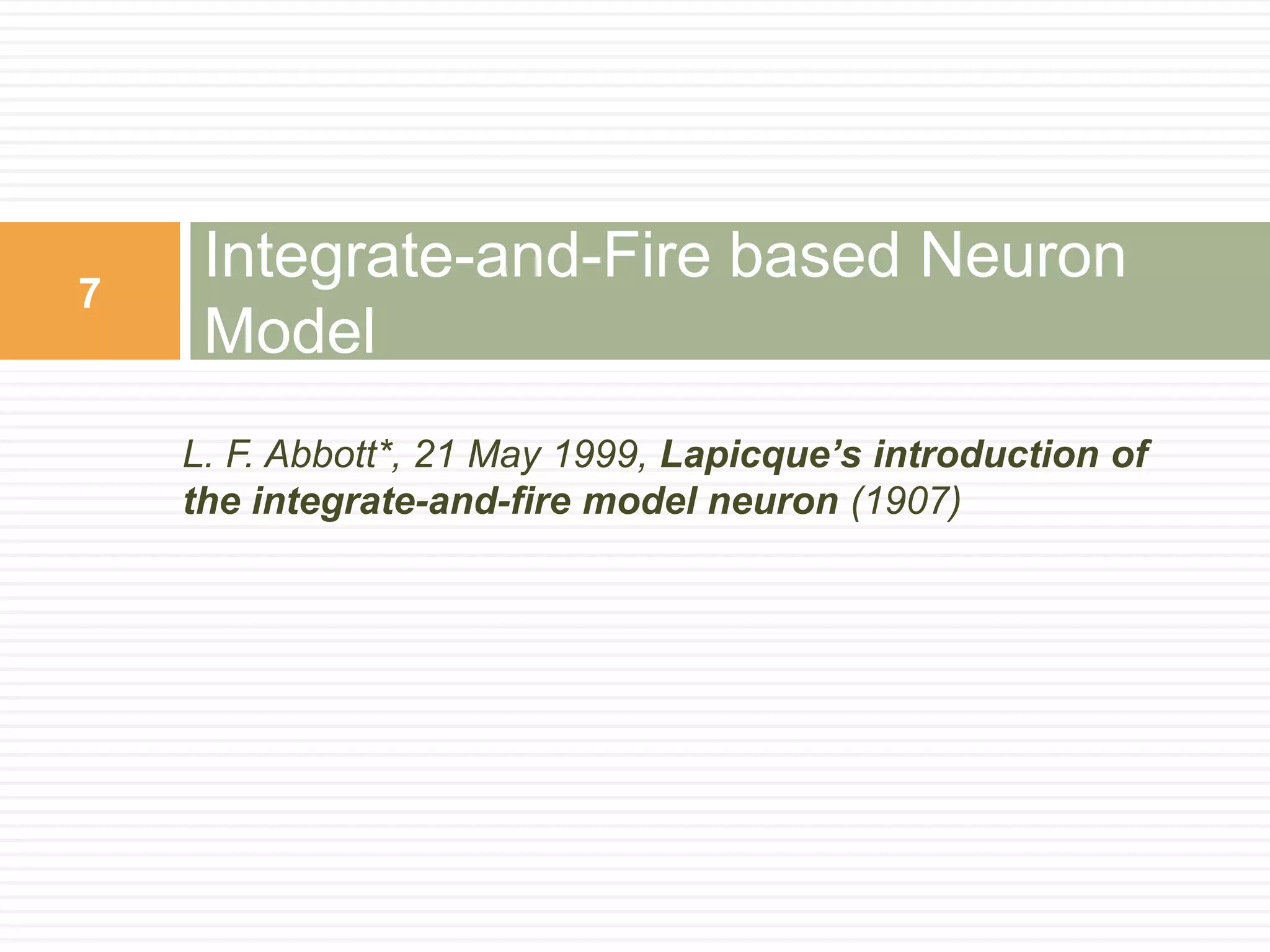

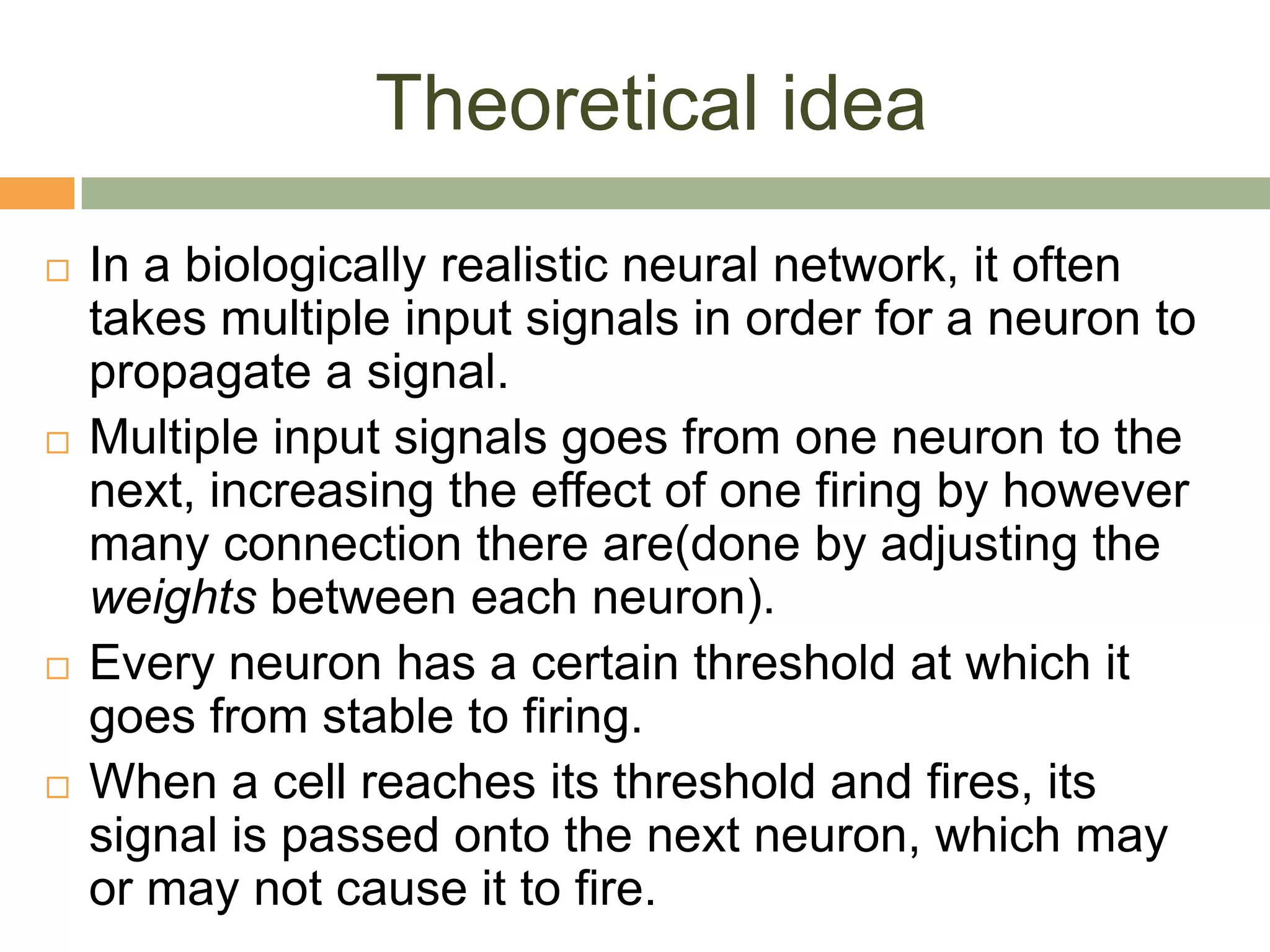
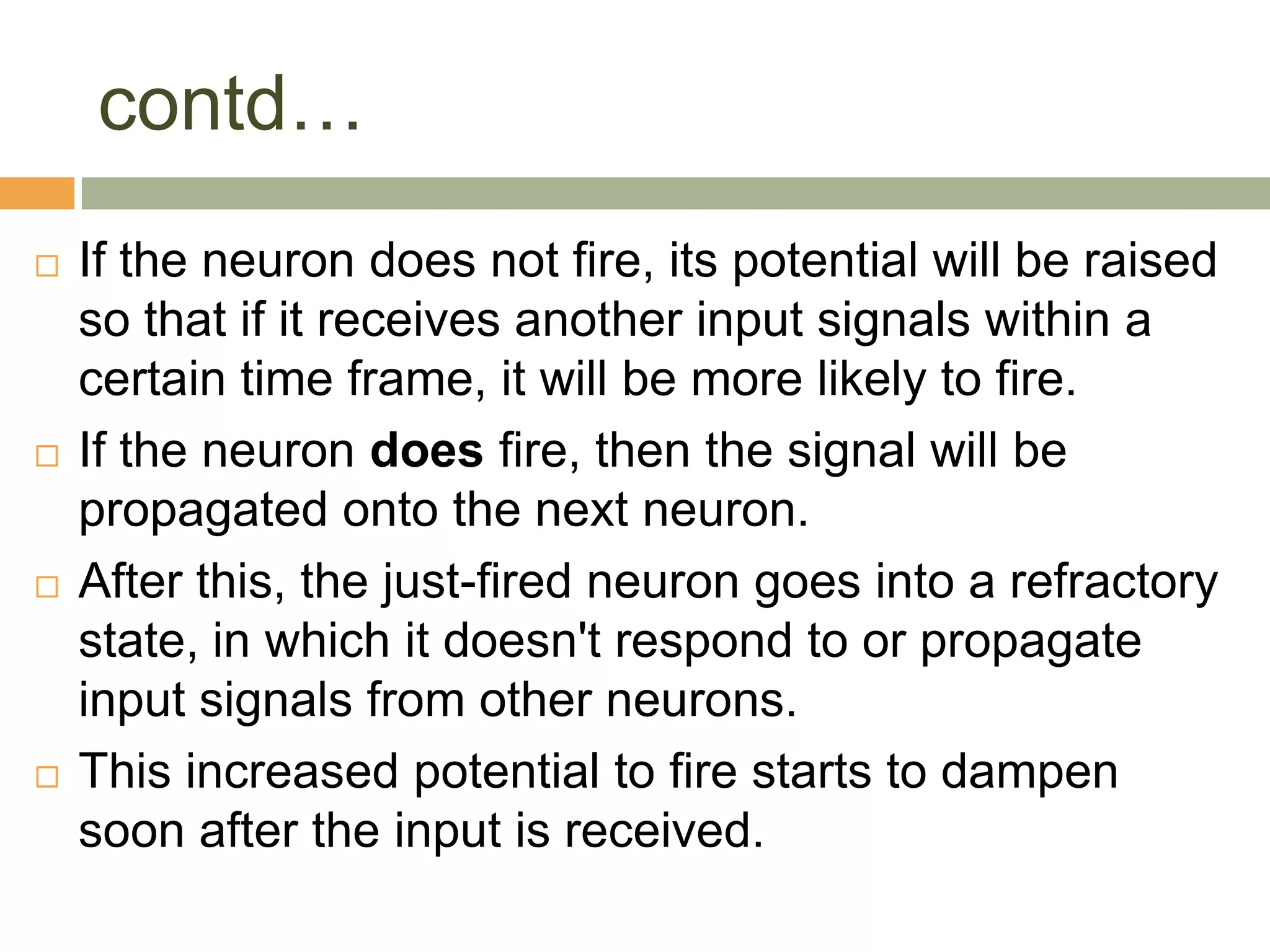
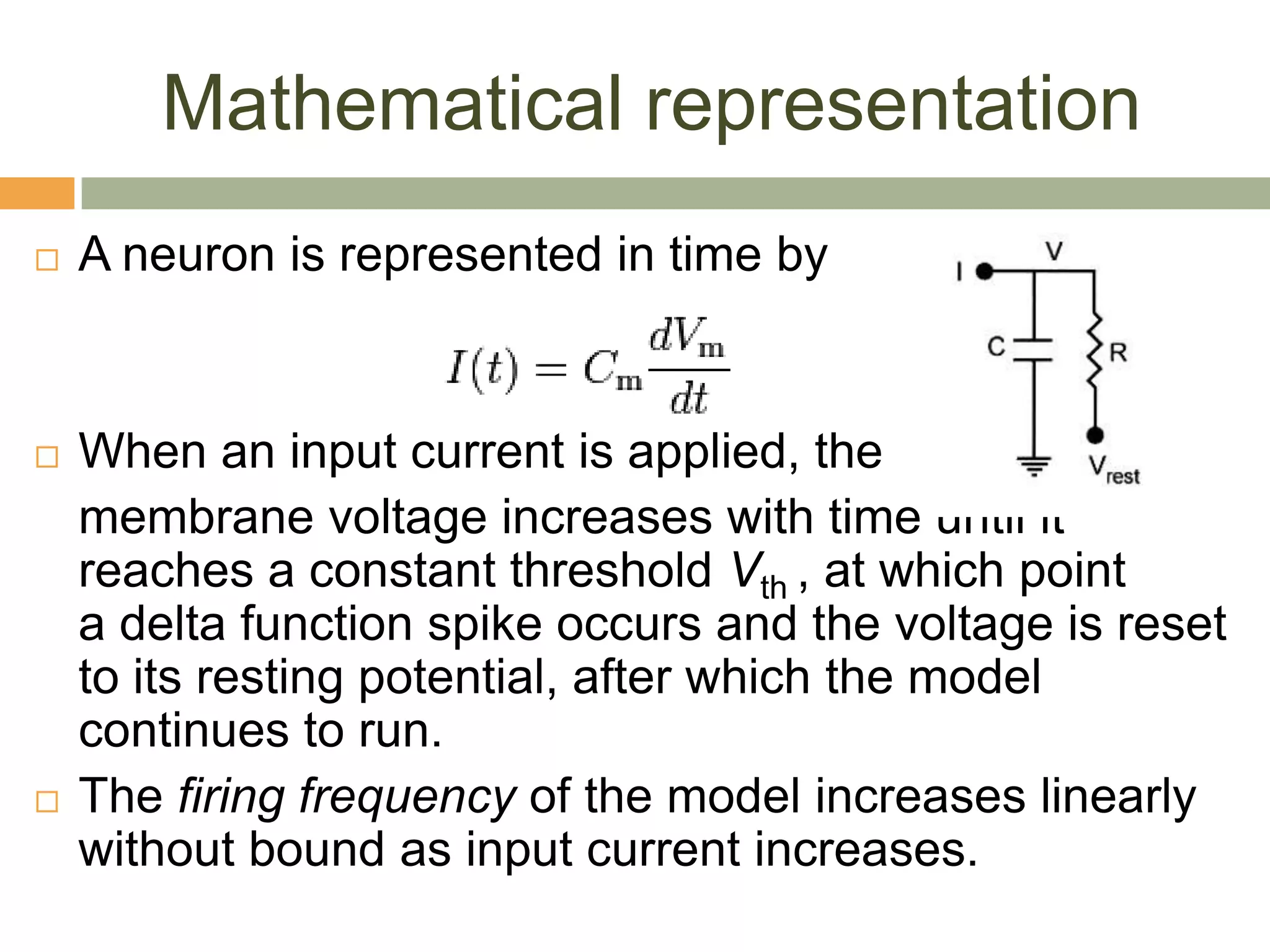


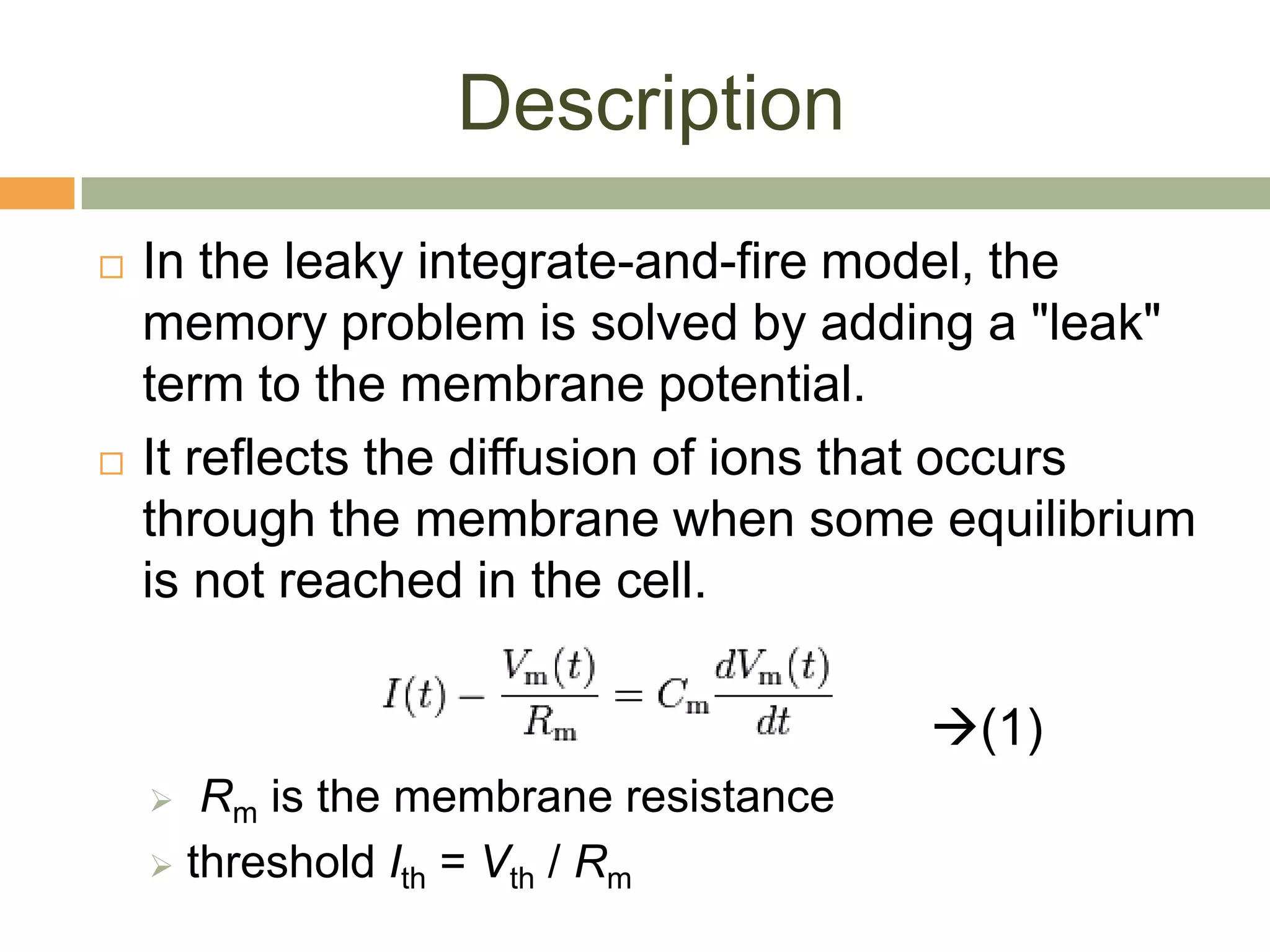
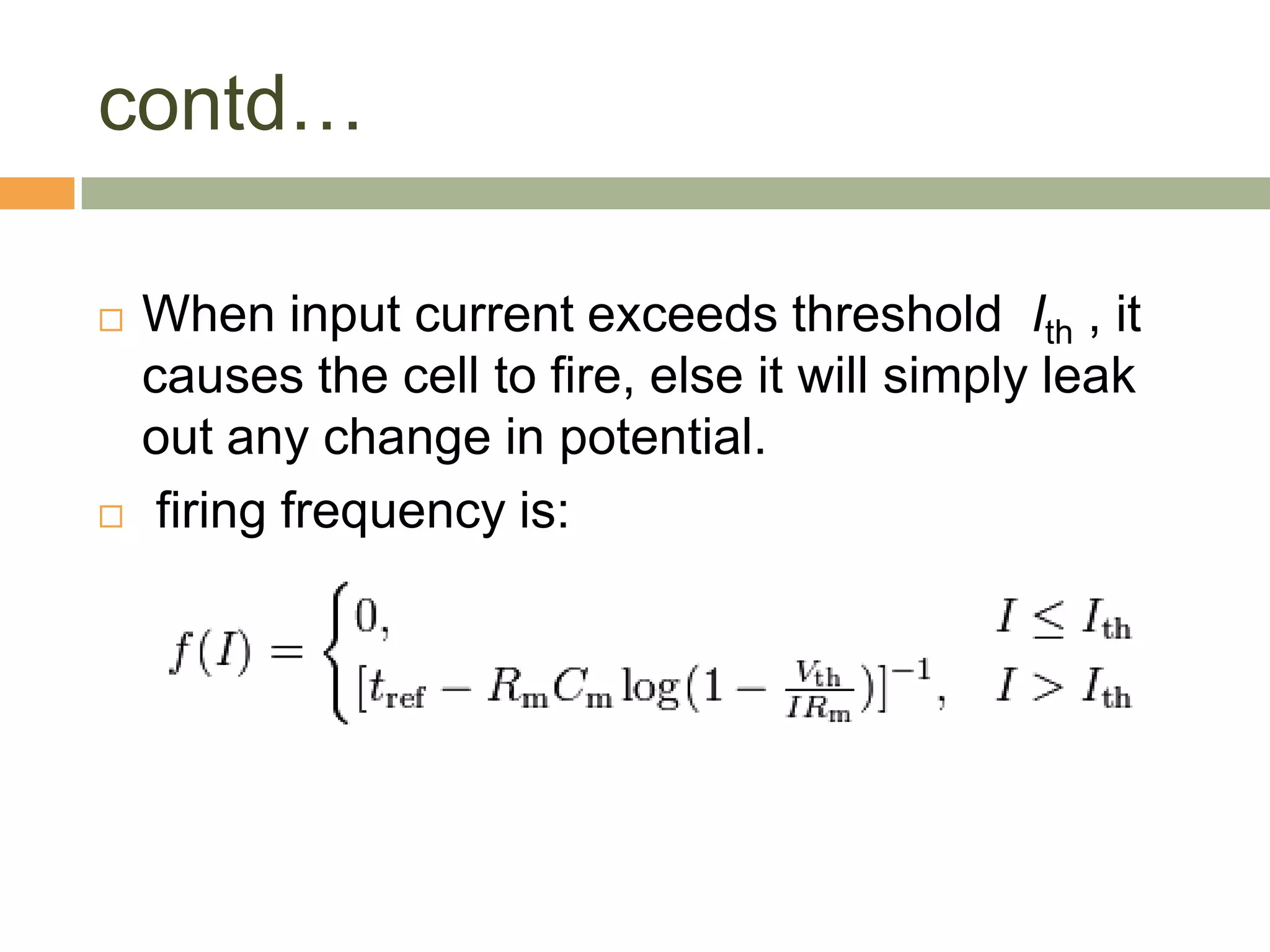
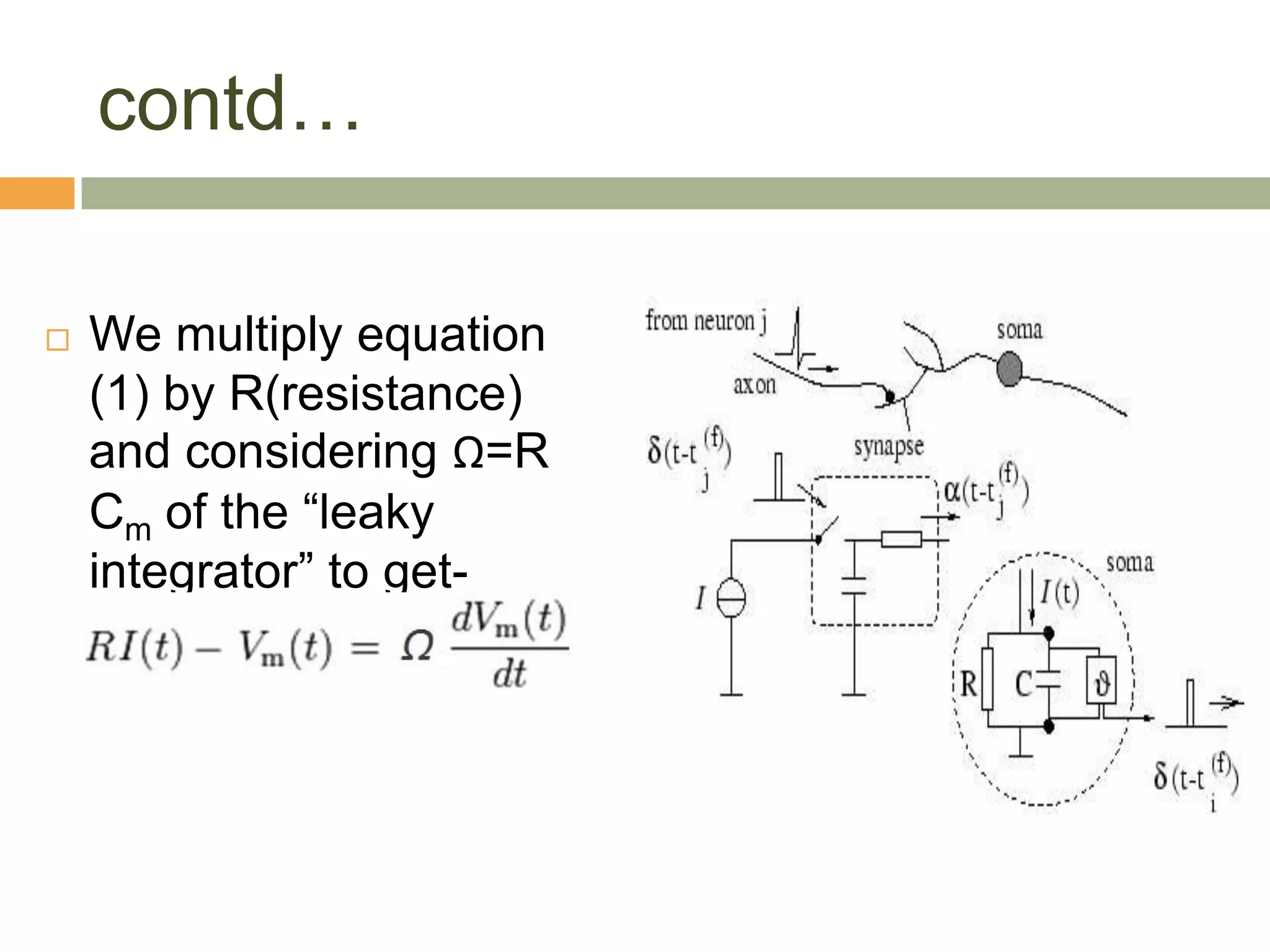
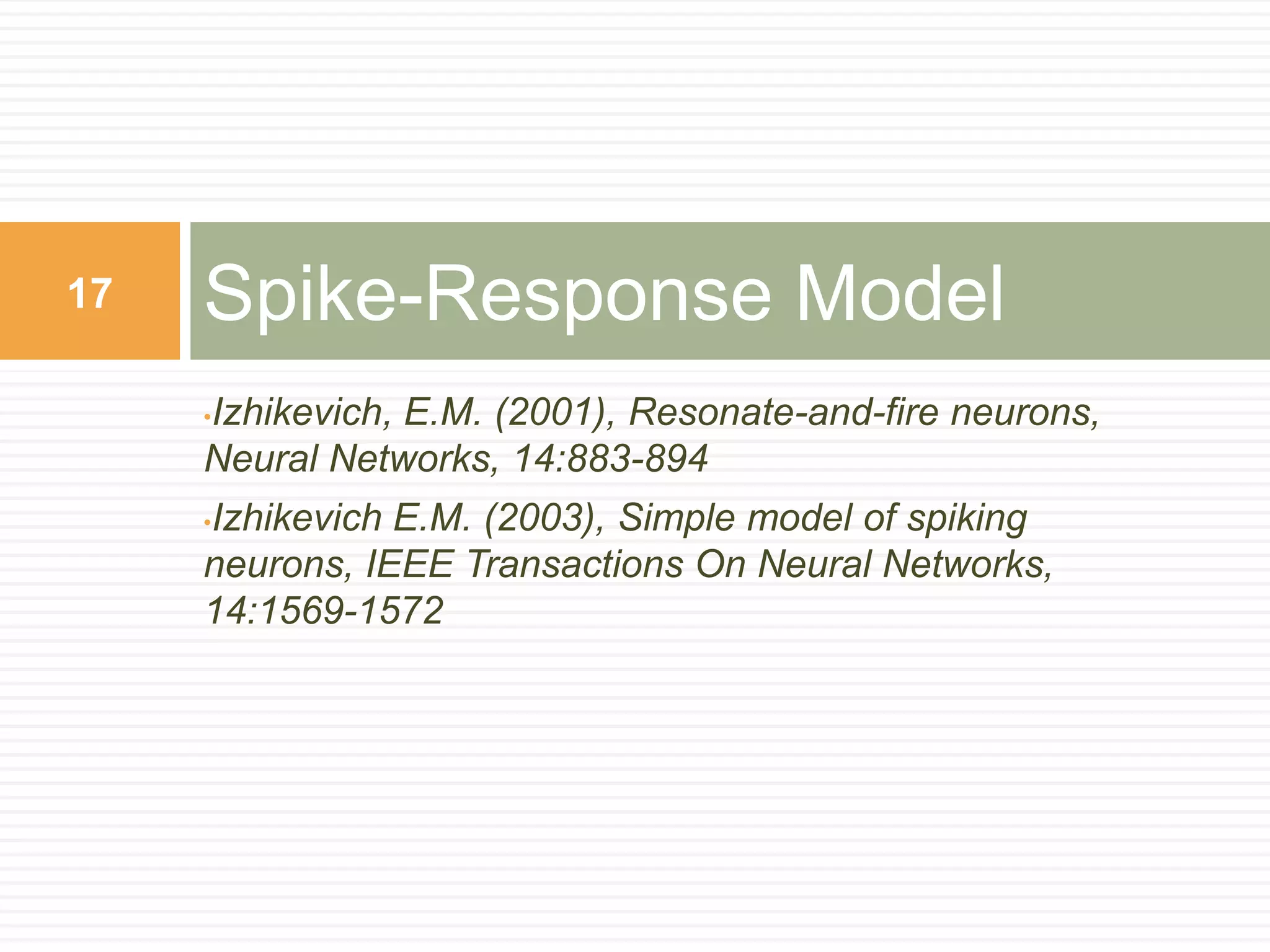

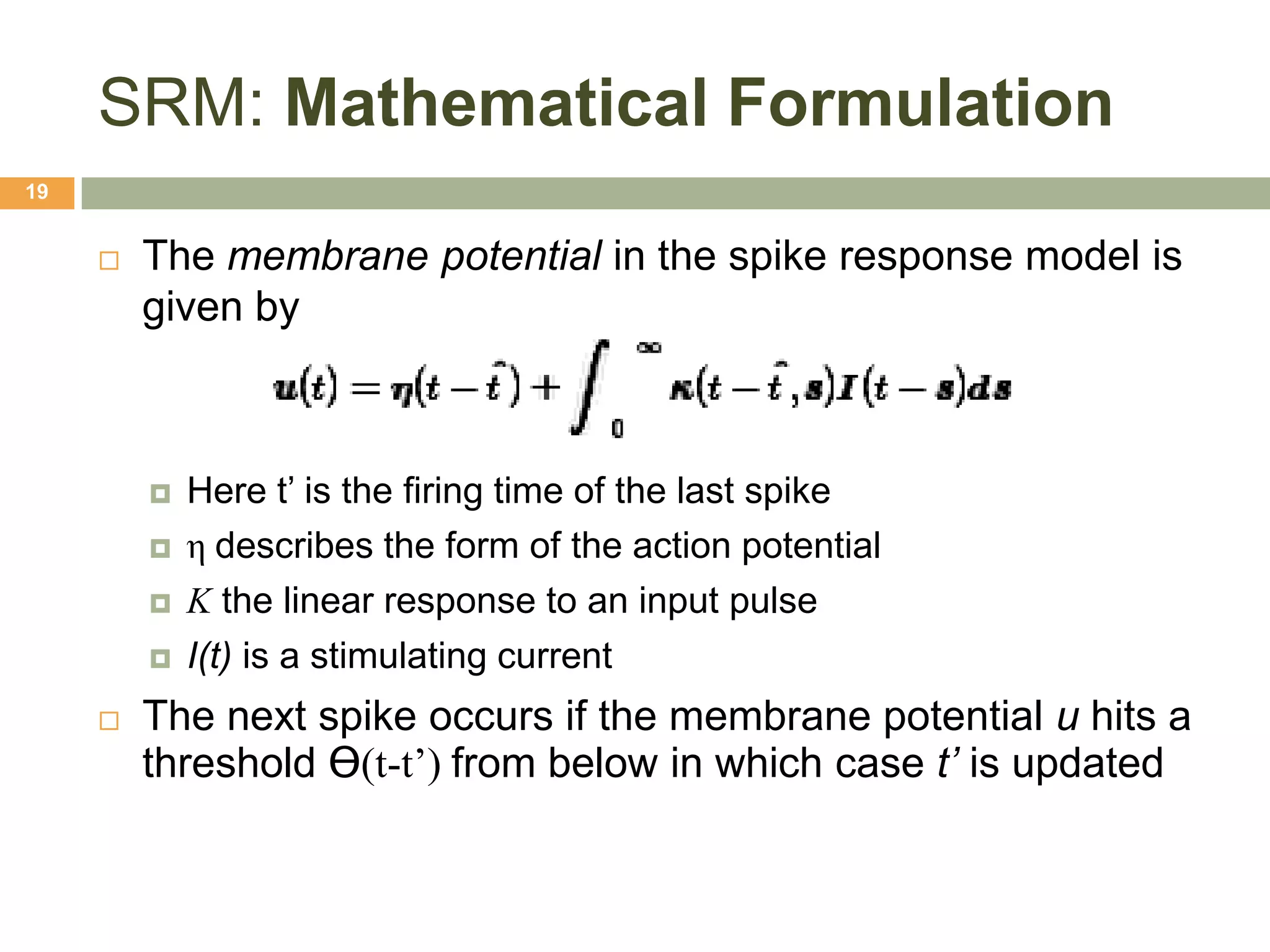

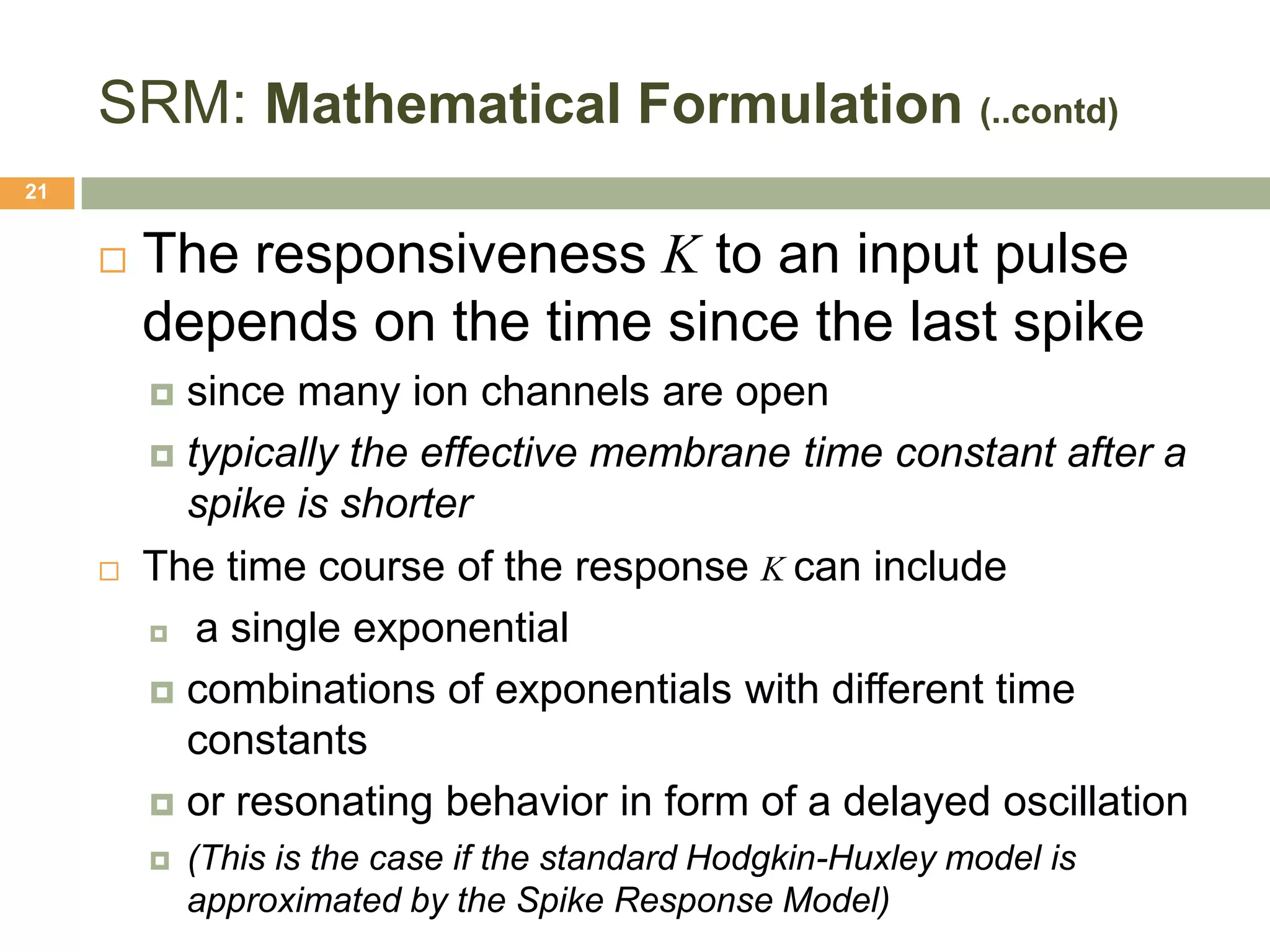
![SRM: Simulating Refractoriness
22
Refractoriness can be modelled as a
combination of
increased threshold
hyperpolarizing afterpotential
and reduced responsiveness after a spike
[as observed in real neurons (Badel et al., 2008)]](https://image.slidesharecdn.com/xneuro-integrateandfireneuronmodeling-130419131653-phpapp02/75/Neuroengineering-Tutorial-Integrate-and-Fire-neuron-modeling-22-2048.jpg)
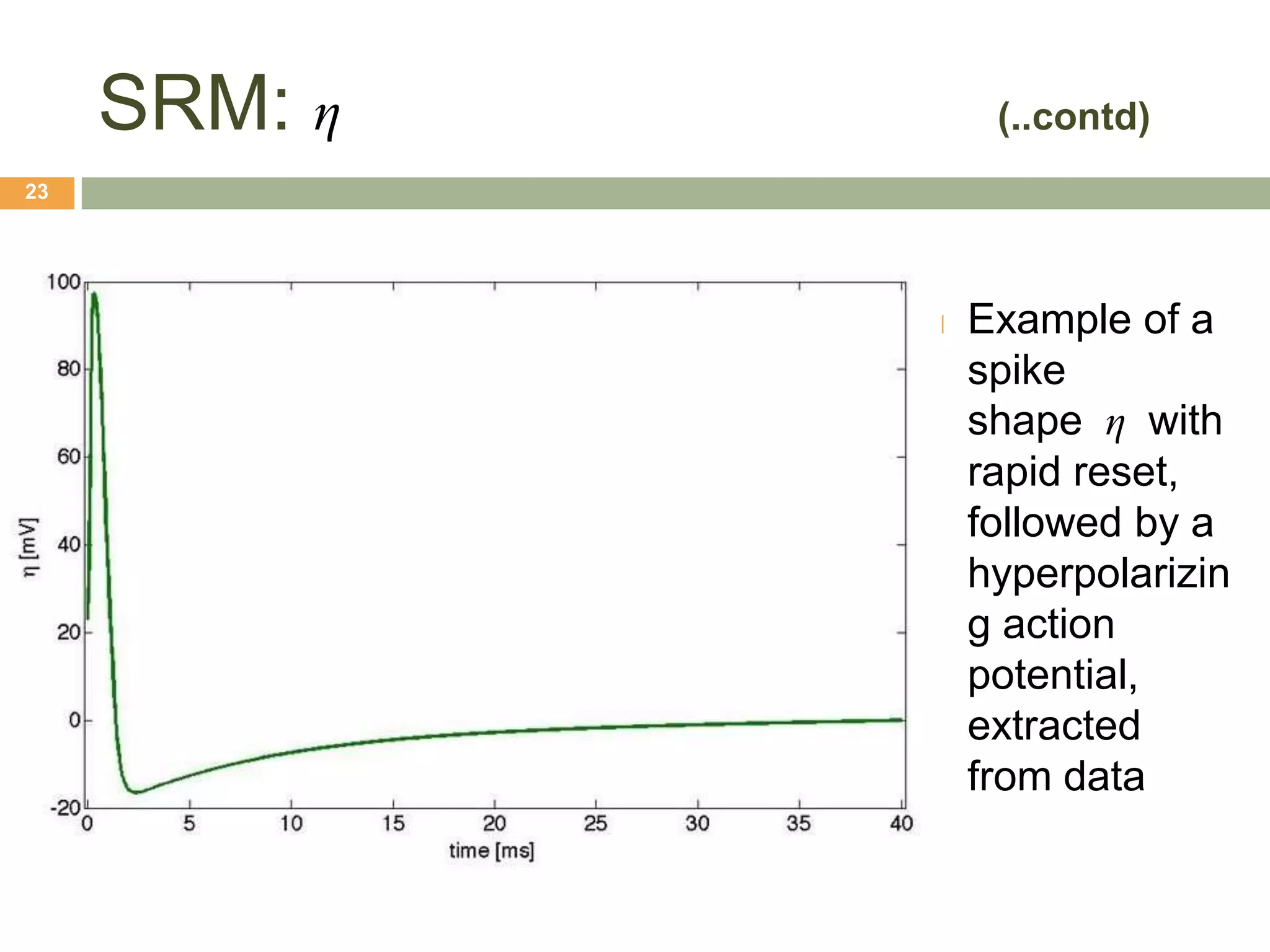
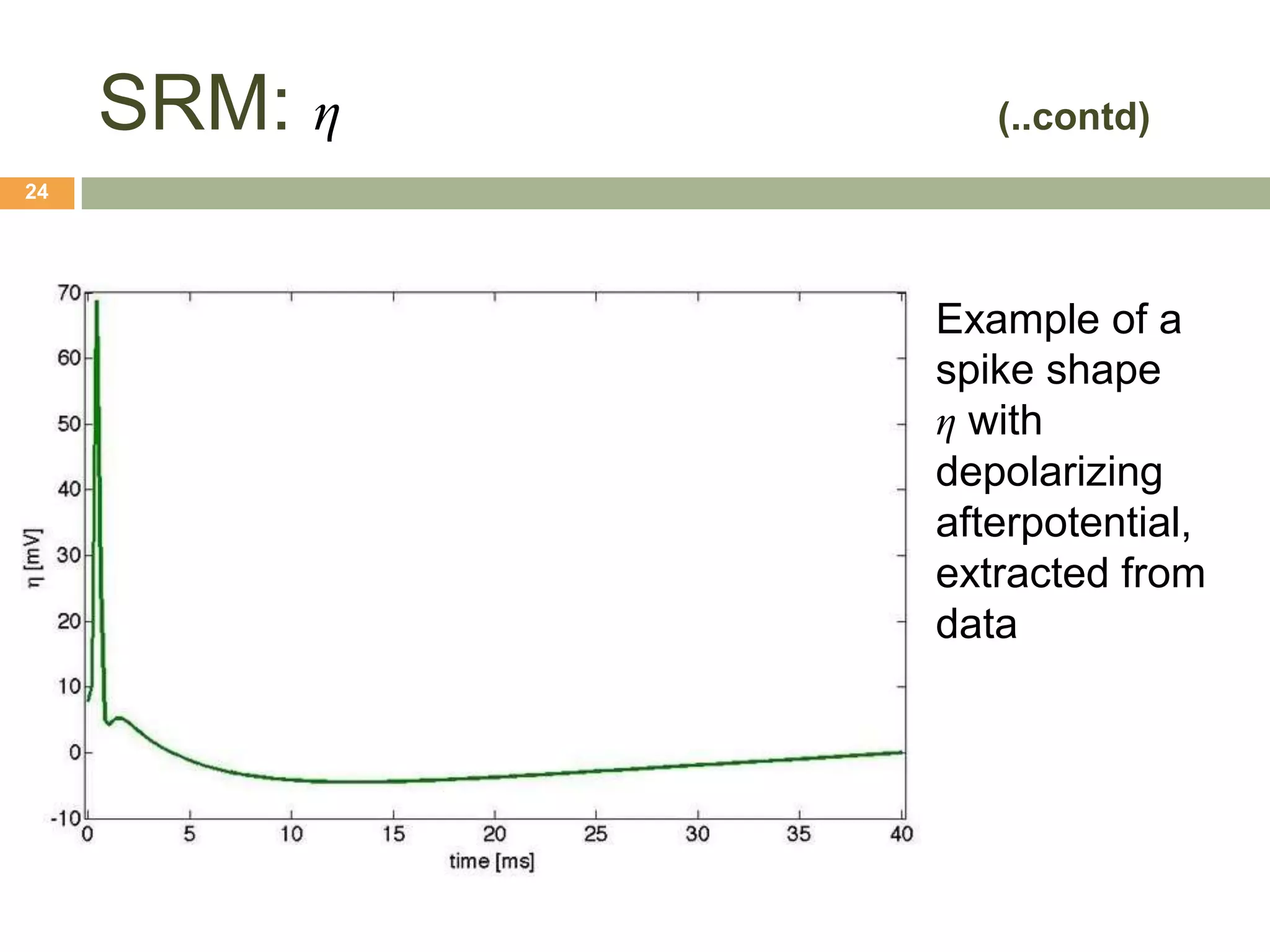
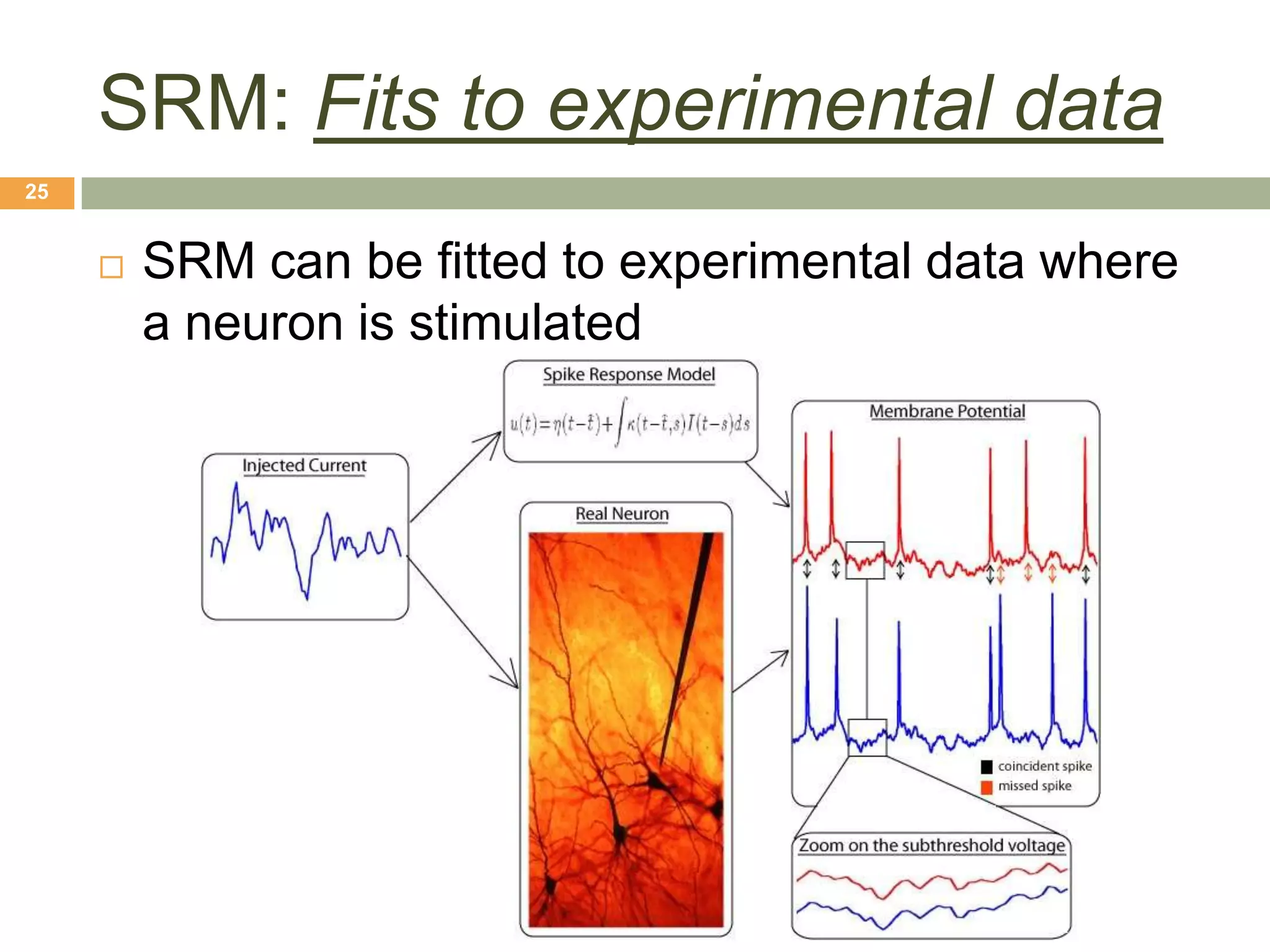
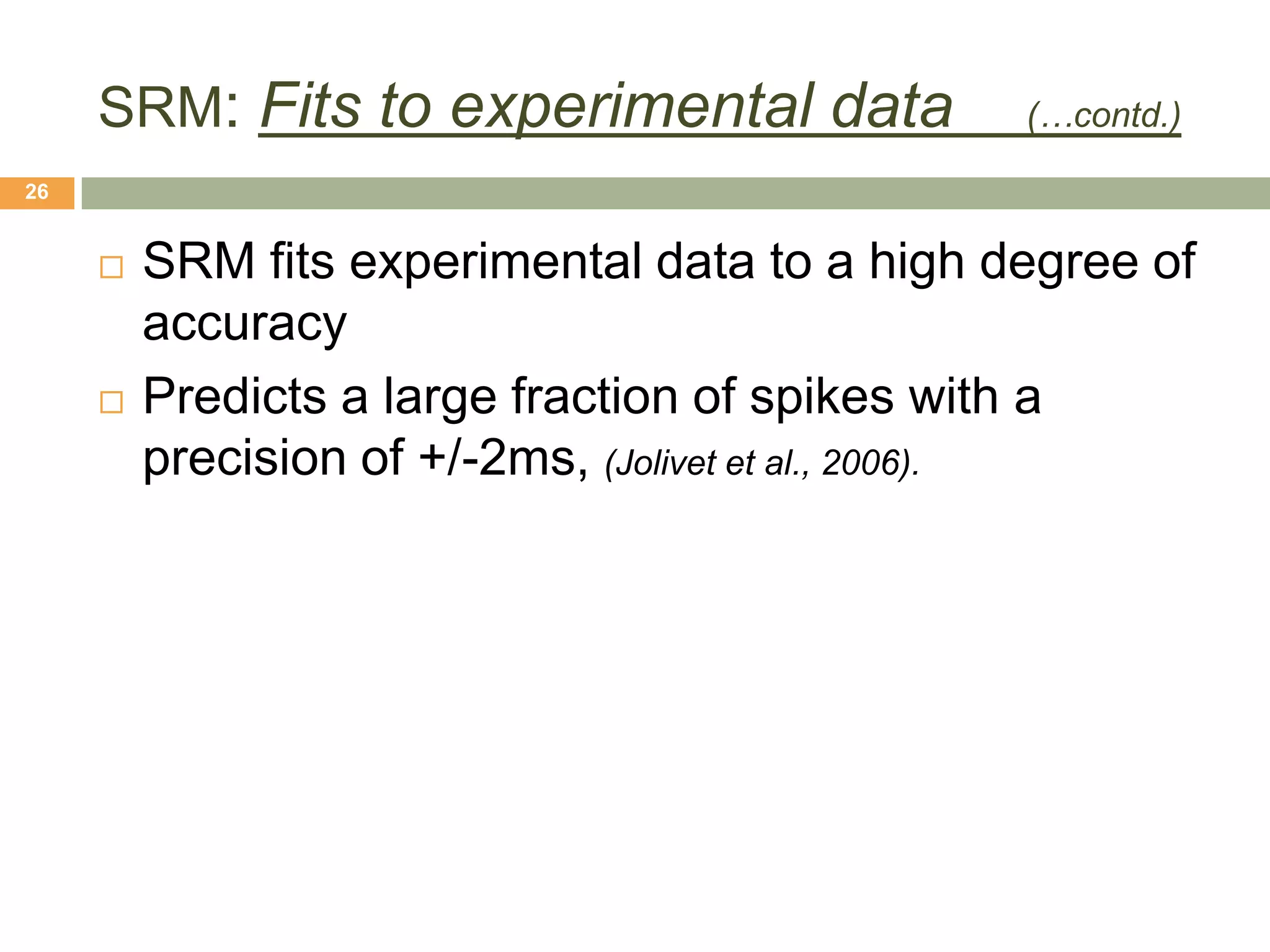
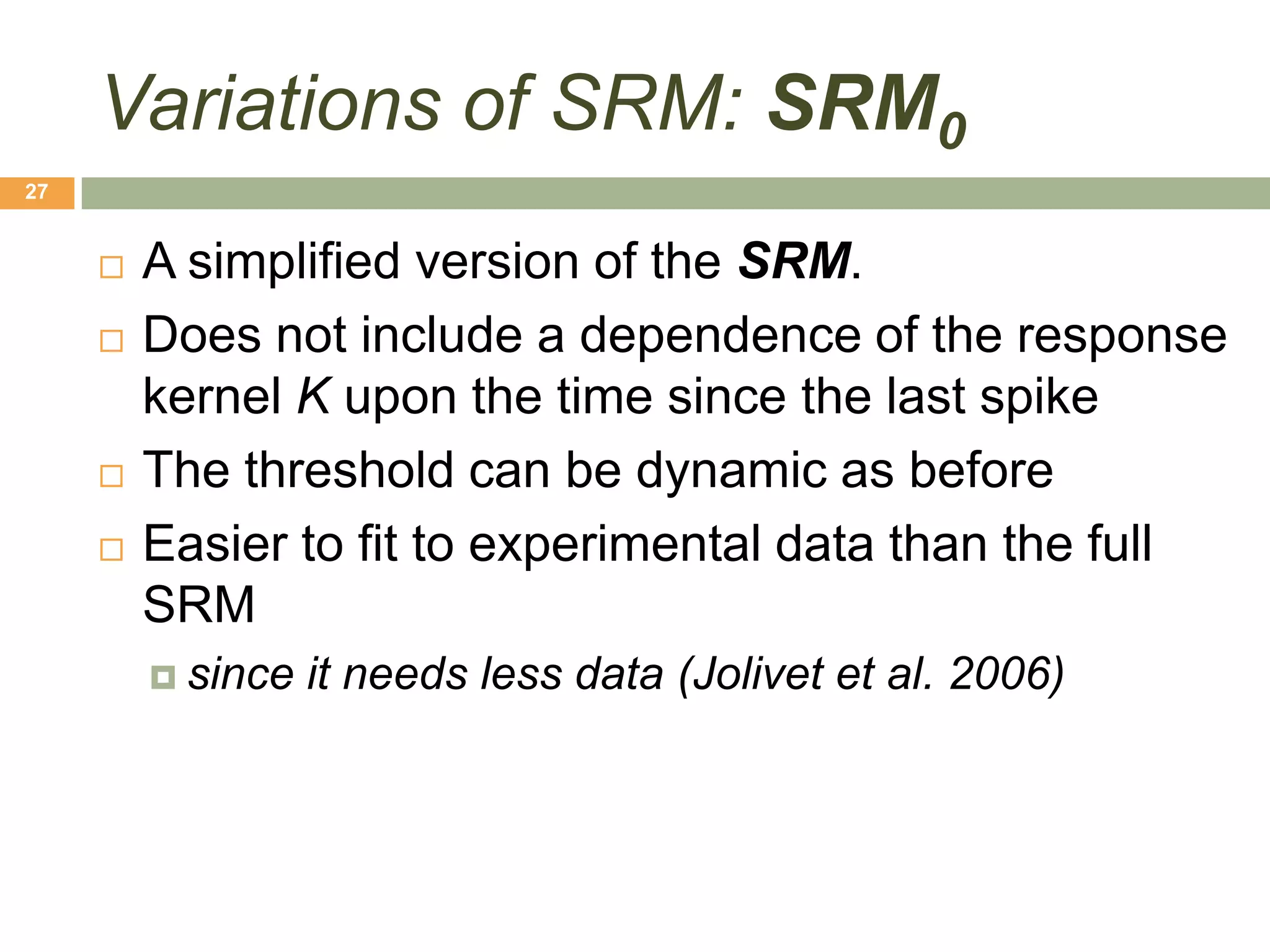
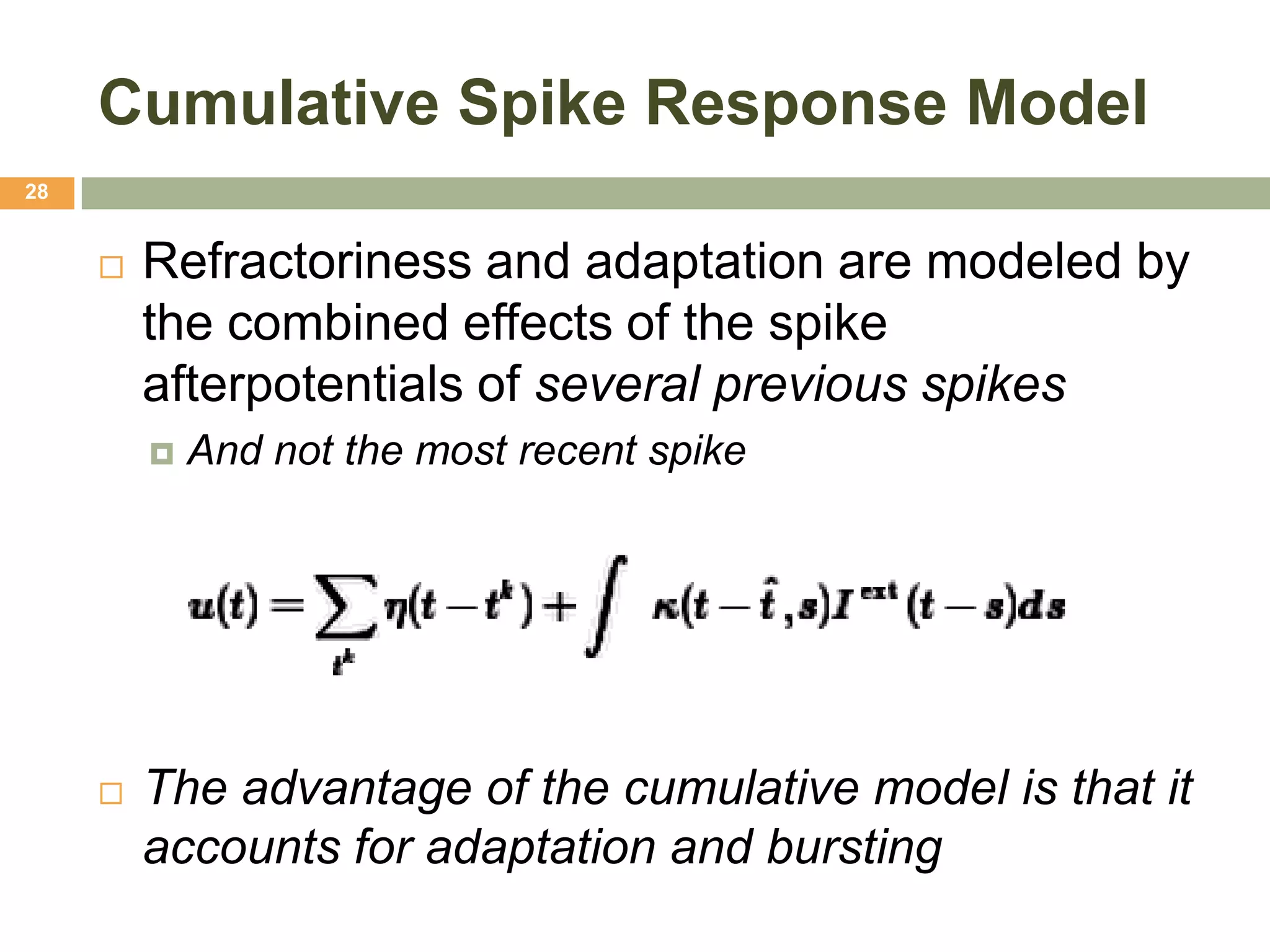
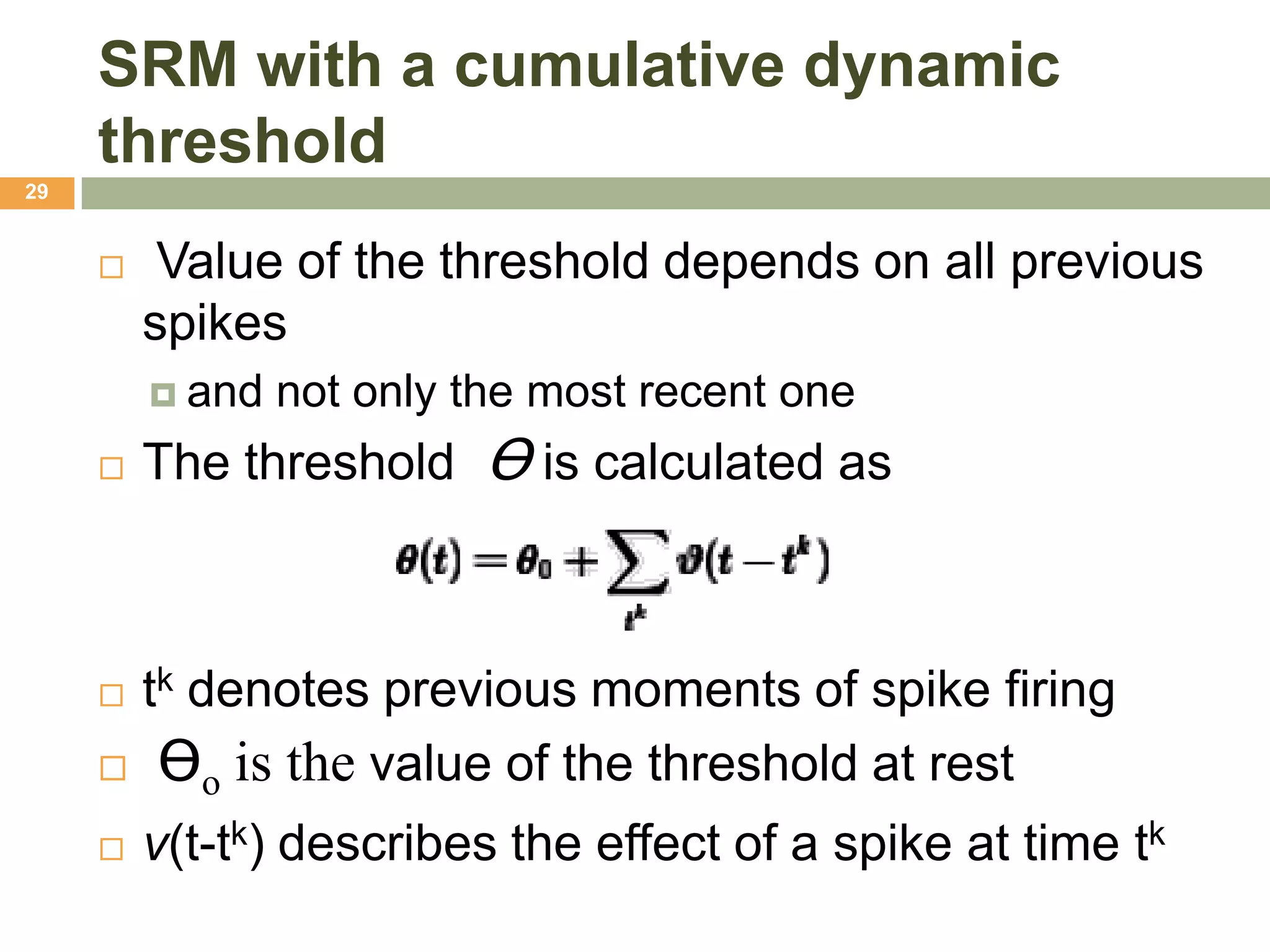
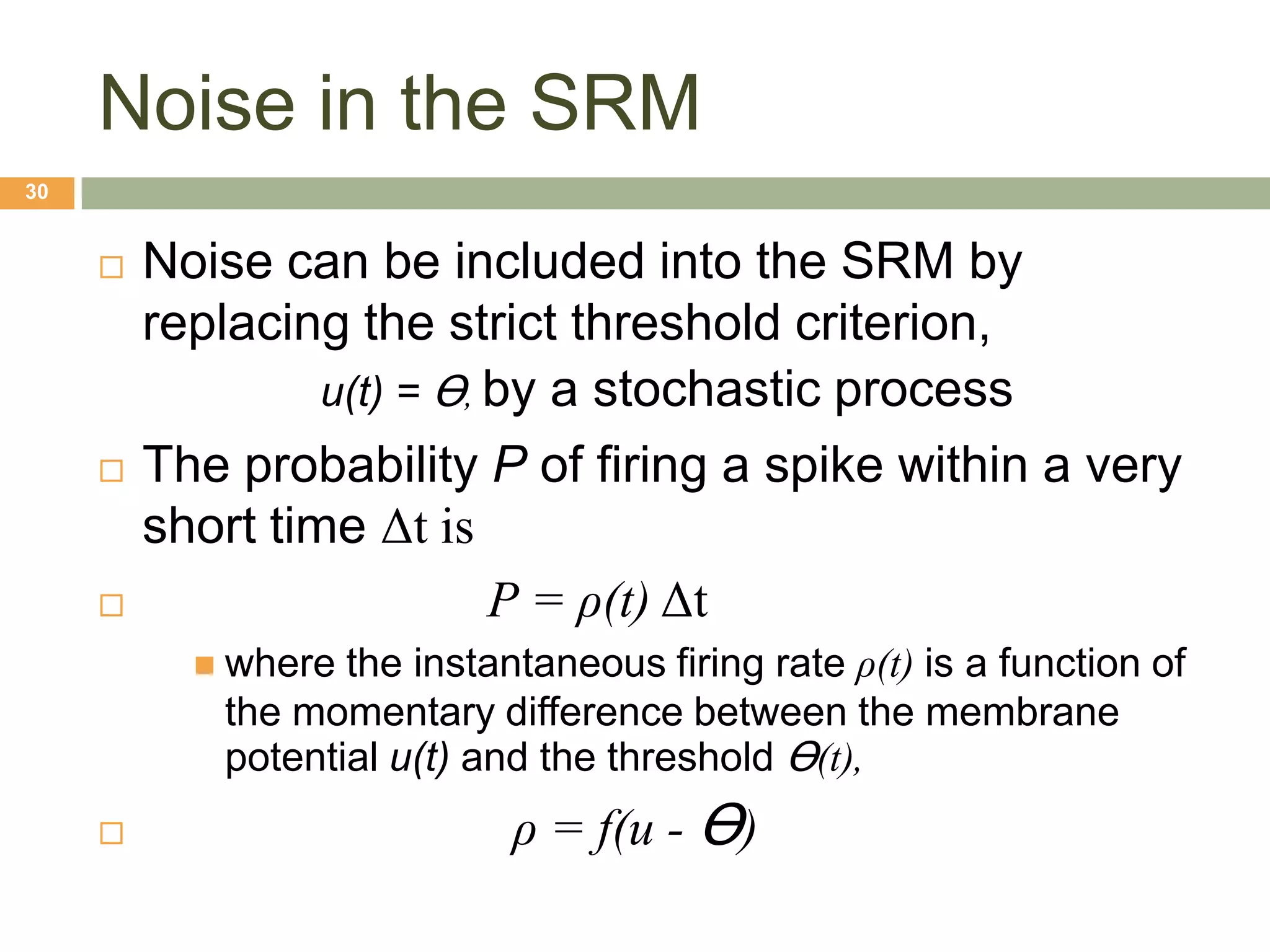
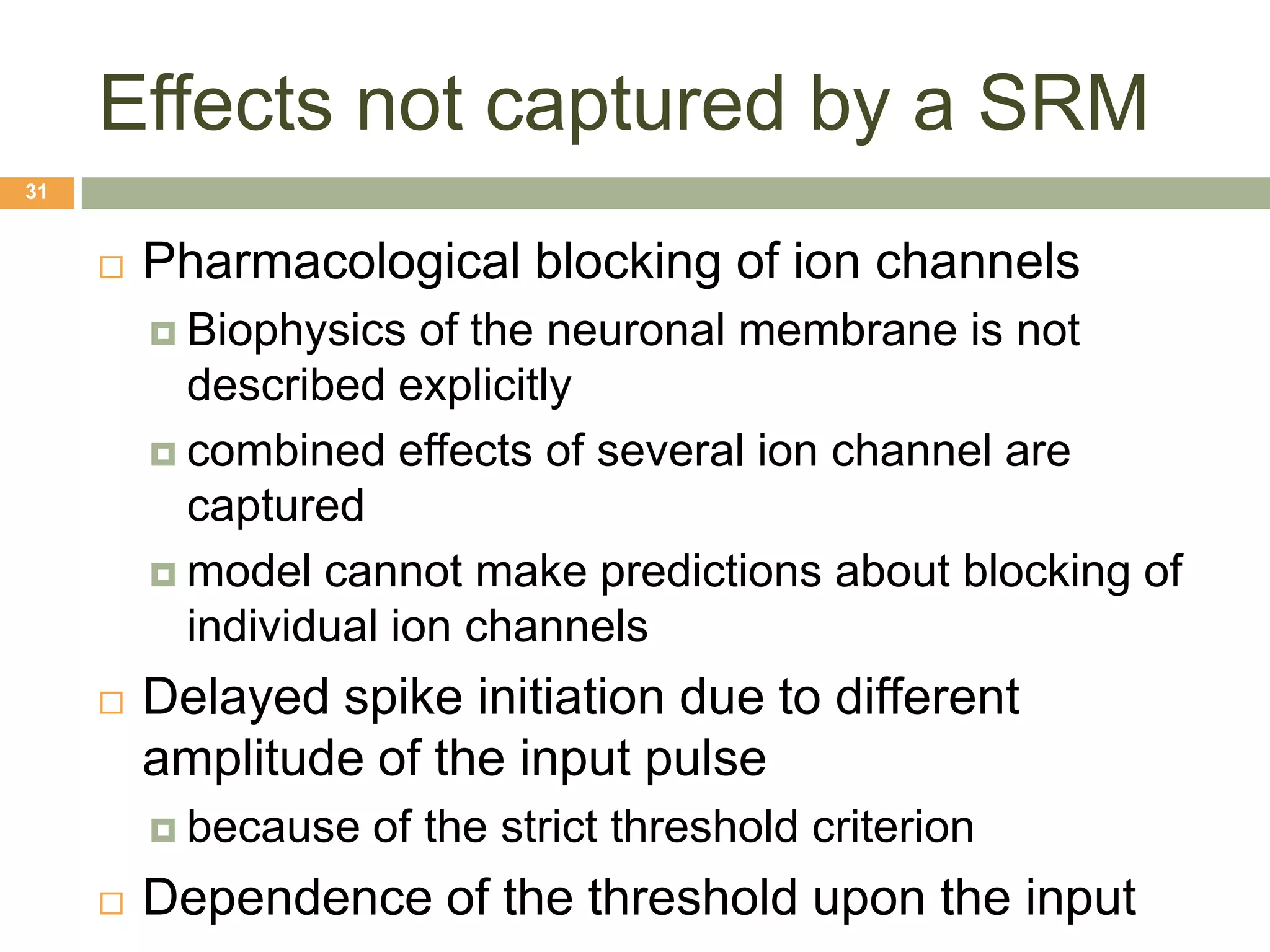
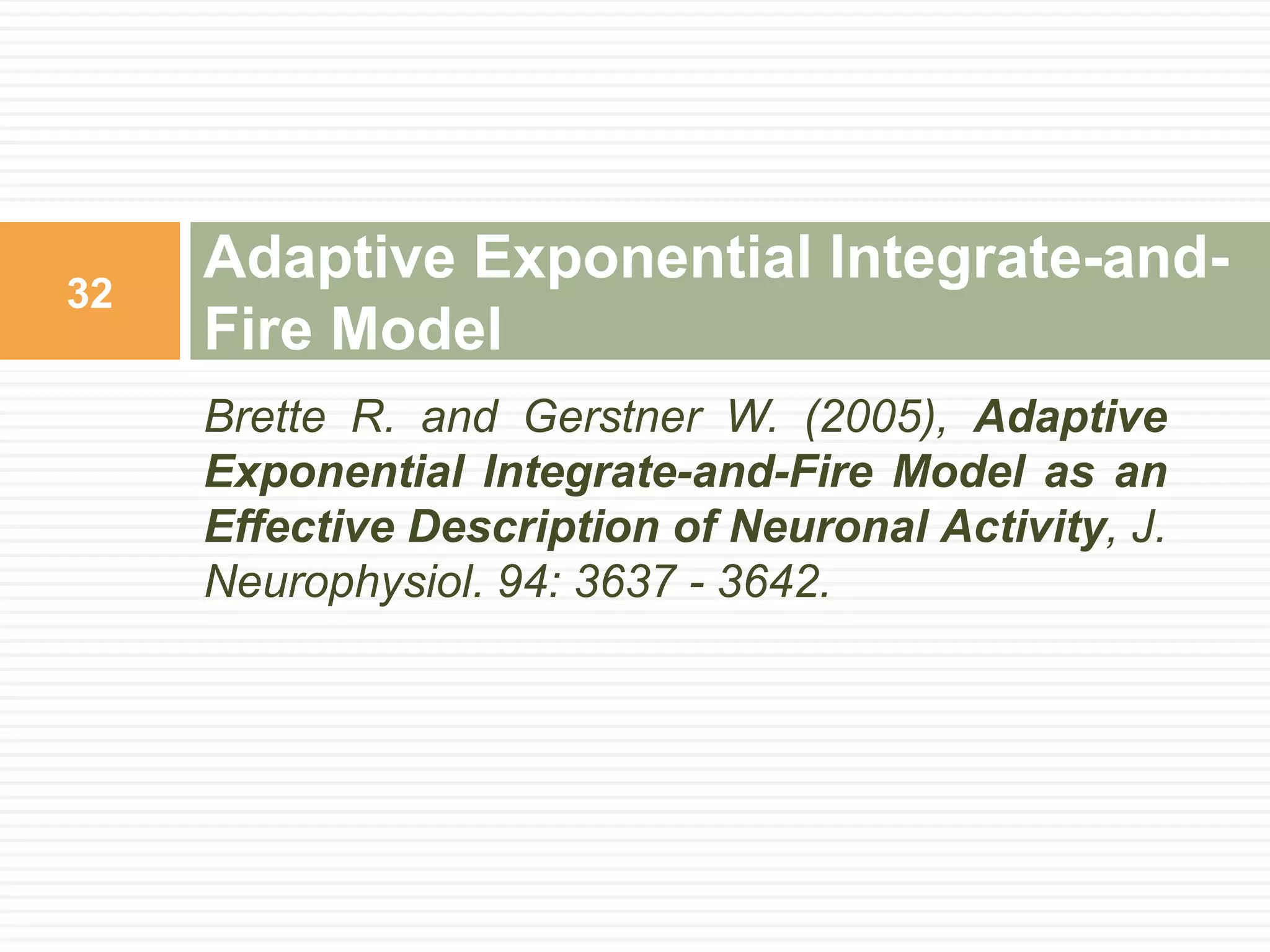
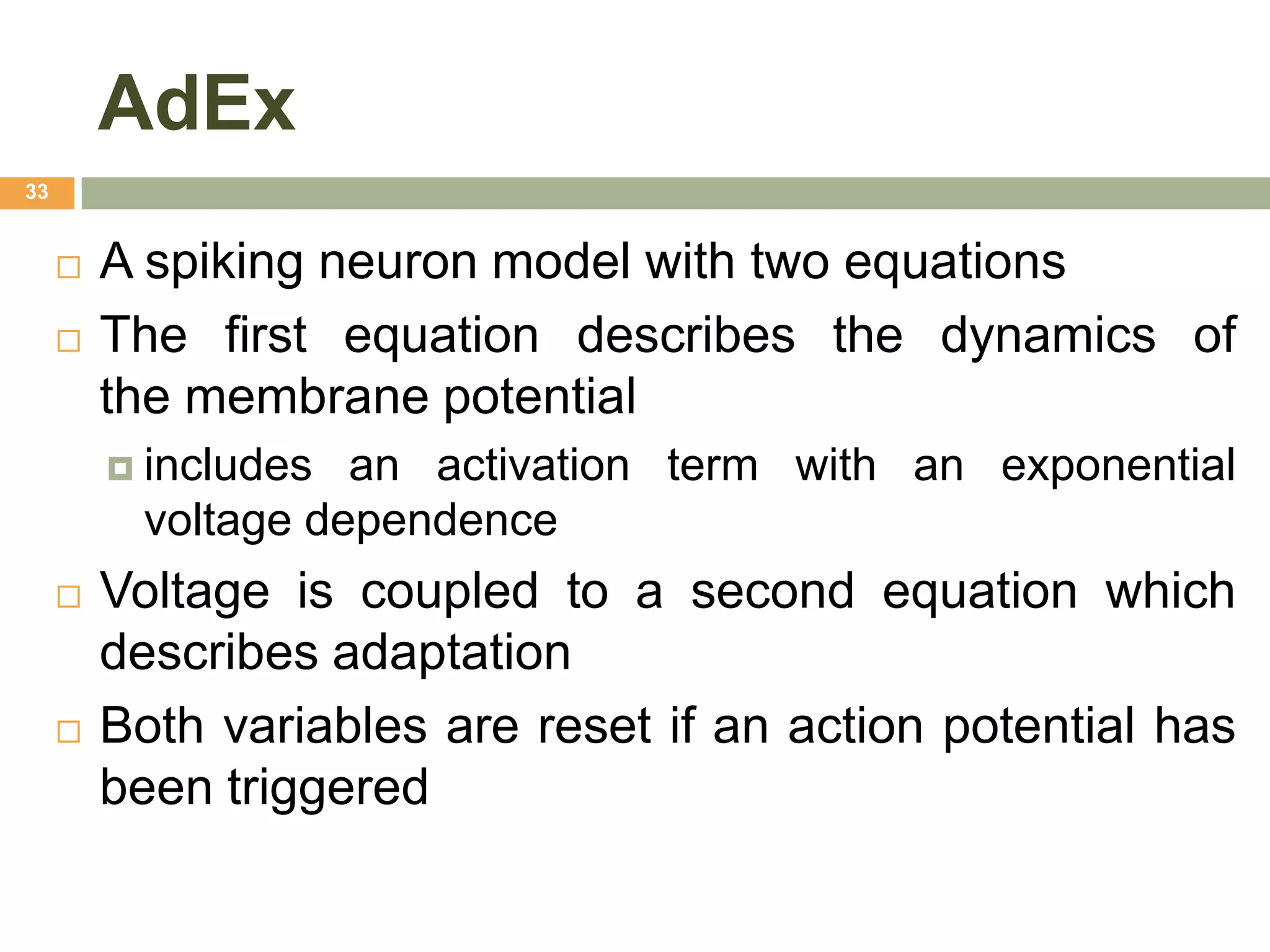
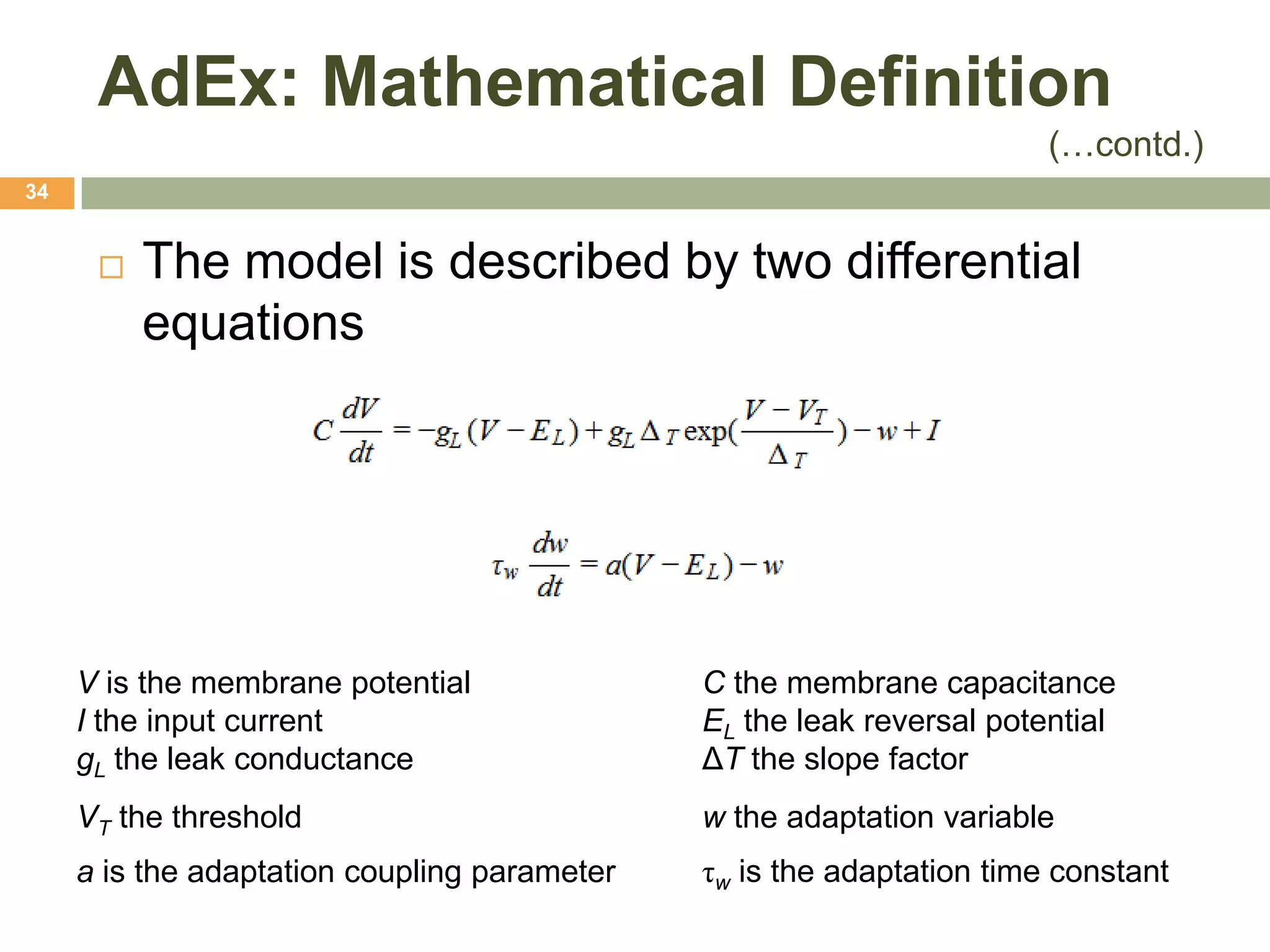
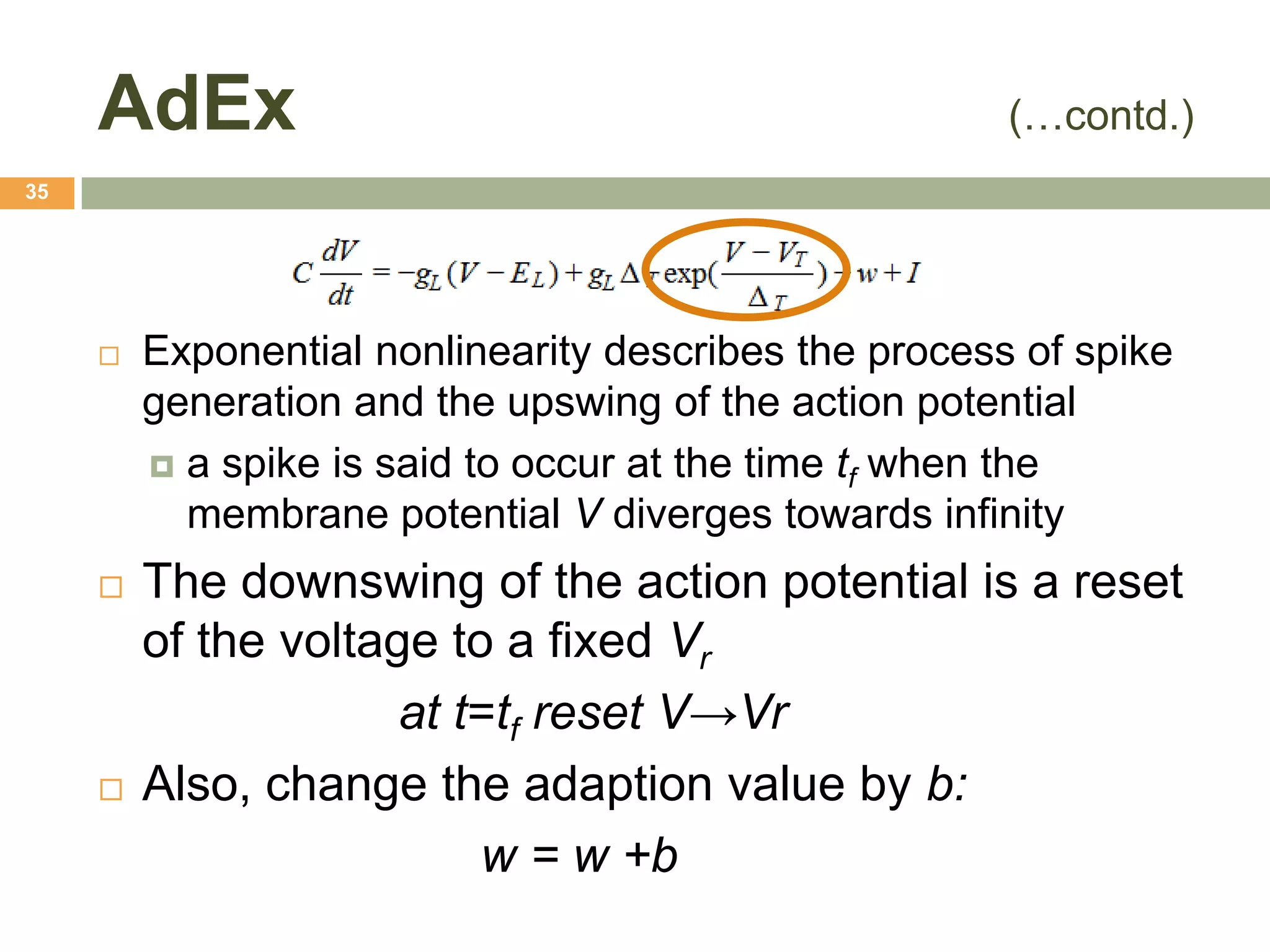
![AdEx: Adaptation
36
Adaptation and
regular firing of
the AdEx model
in response to a
current step;
voltage (top) and
adaptation
variable (bottom)
[Naud, Marcille, Colpath, Gerstner (2008), Firing patterns in the adaptive exponential integrate-and-fire model]](https://image.slidesharecdn.com/xneuro-integrateandfireneuronmodeling-130419131653-phpapp02/75/Neuroengineering-Tutorial-Integrate-and-Fire-neuron-modeling-36-2048.jpg)
![AdEx: Voltage Response
37
Voltage
response of the
AdEx model to
a series of
regularly spaced
(10 Hz) current
pulse
[Naud, Marcille, Colpath, Gerstner (2008), Firing patterns in the adaptive exponential integrate-and-fire model]](https://image.slidesharecdn.com/xneuro-integrateandfireneuronmodeling-130419131653-phpapp02/75/Neuroengineering-Tutorial-Integrate-and-Fire-neuron-modeling-37-2048.jpg)
![AdEx: Initial bursting as response
38
Voltage (X-axis) and adaptation variable Voltage as a function of
Resting potential marked by cross time
reset values marked by squares
[Naud, Marcille, Colpath, Gerstner (2008), Firing patterns in the adaptive exponential integrate-and-fire model]](https://image.slidesharecdn.com/xneuro-integrateandfireneuronmodeling-130419131653-phpapp02/75/Neuroengineering-Tutorial-Integrate-and-Fire-neuron-modeling-38-2048.jpg)
![AdEx: Bursting
39
Bursting with 3 spikes per burst in the AdEx model
Bursting occurs when the reset value Vr is high, so that spikes are produced
quickly after reset, until adaptation builds up
[Naud, Marcille, Colpath, Gerstner (2008), Firing patterns in the adaptive exponential integrate-and-fire model]](https://image.slidesharecdn.com/xneuro-integrateandfireneuronmodeling-130419131653-phpapp02/75/Neuroengineering-Tutorial-Integrate-and-Fire-neuron-modeling-39-2048.jpg)
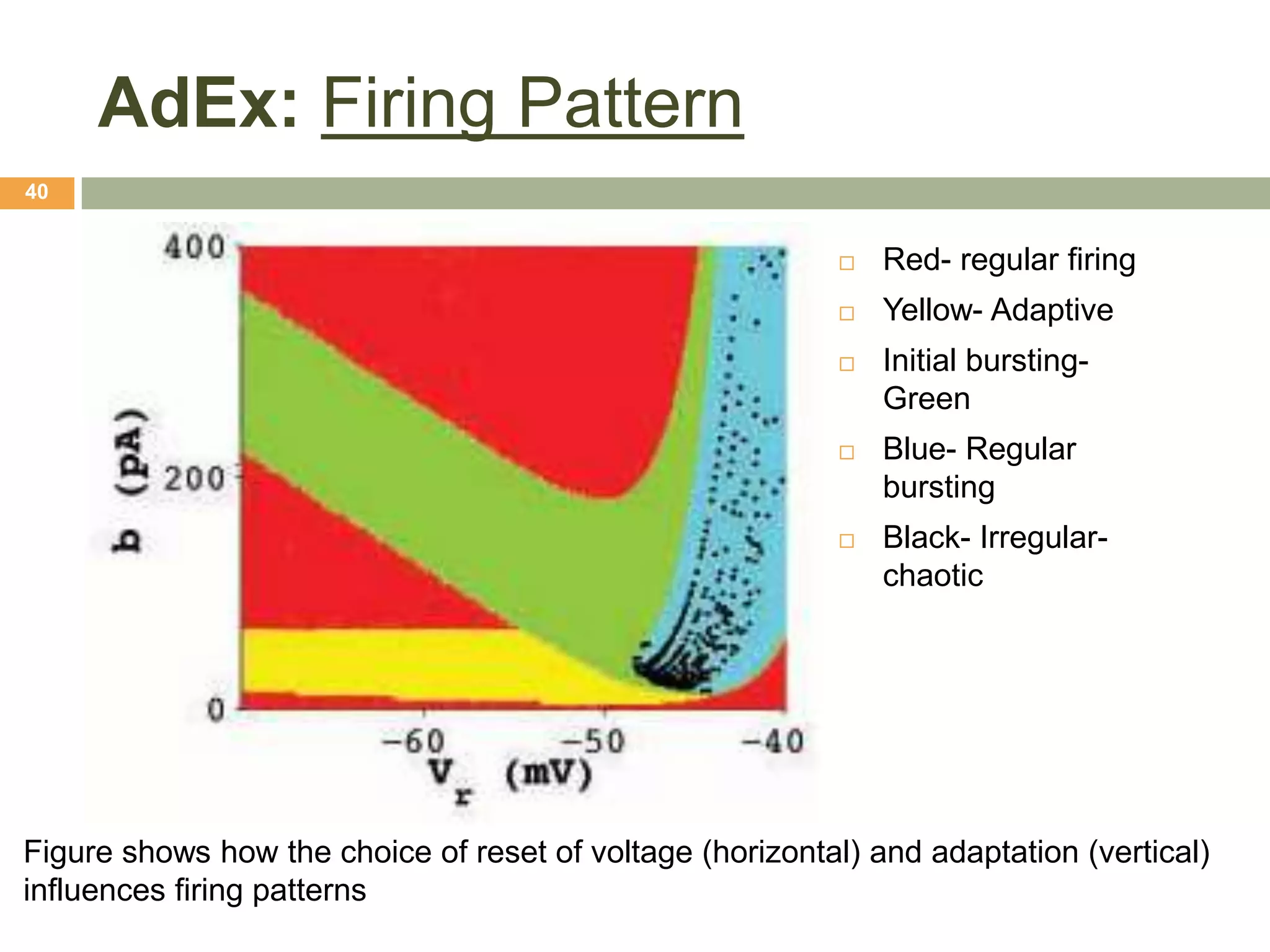
![Fitting to real Neurons’ data
41
The parameters of the AdEx model can be fit
to match the response of neurons
usingsimple electrophysiological protocols
(current pulses, steps and ramps)
AdEx model can reproduce up to 96% of the
spike times of a regular-spiking Hodgkin–
Huxley-type model
[Brette and Gerstner, 2005]](https://image.slidesharecdn.com/xneuro-integrateandfireneuronmodeling-130419131653-phpapp02/75/Neuroengineering-Tutorial-Integrate-and-Fire-neuron-modeling-41-2048.jpg)
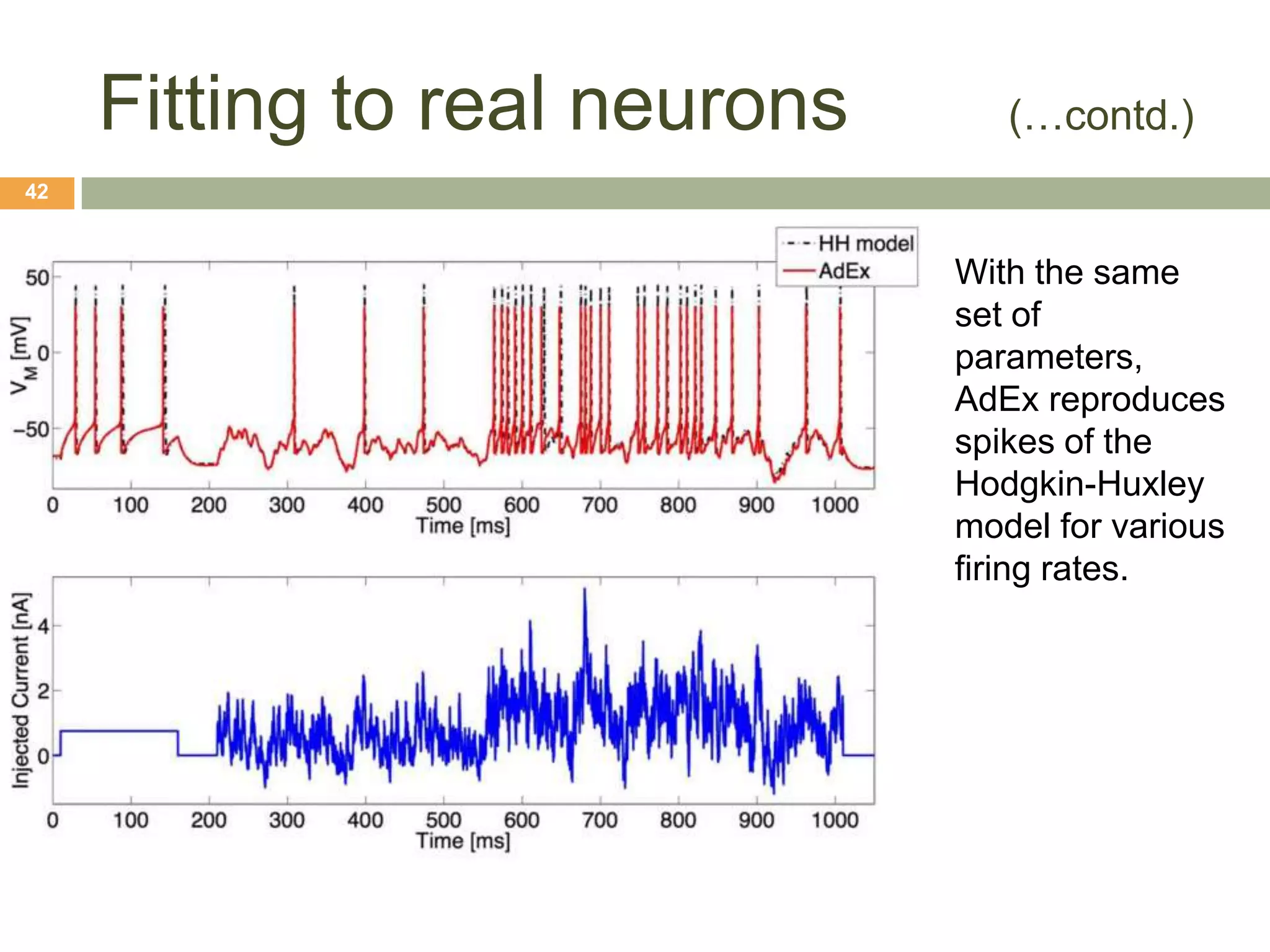

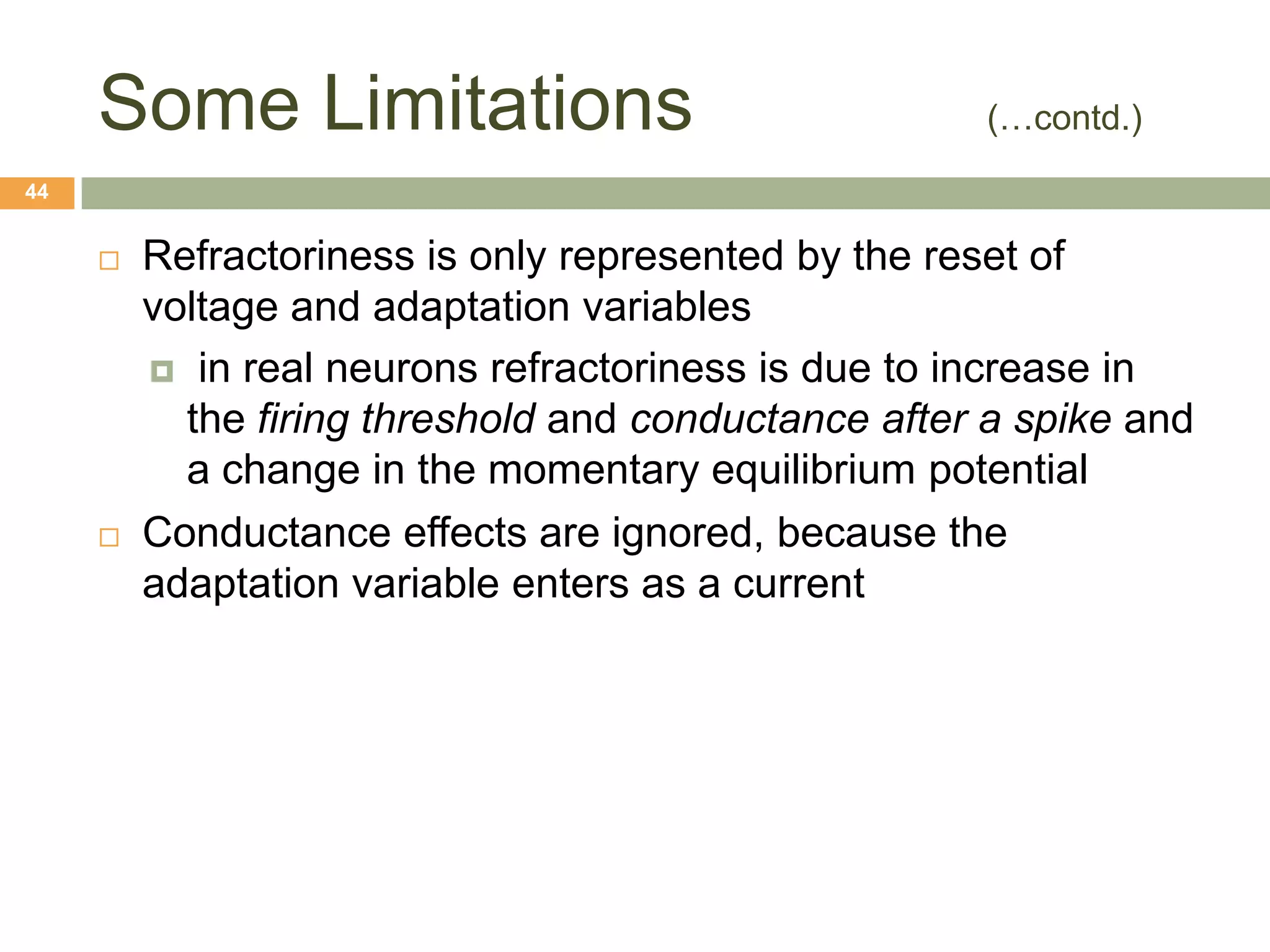



![AdEx: Delayed spiking
48
Delayed spiking as
response of the AdEx
model to a current step
Voltage as a function of time
[Naud, Marcille, Colpath, Gerstner (2008), Firing patterns in the adaptive exponential integrate-and-fire model]](https://image.slidesharecdn.com/xneuro-integrateandfireneuronmodeling-130419131653-phpapp02/75/Neuroengineering-Tutorial-Integrate-and-Fire-neuron-modeling-48-2048.jpg)